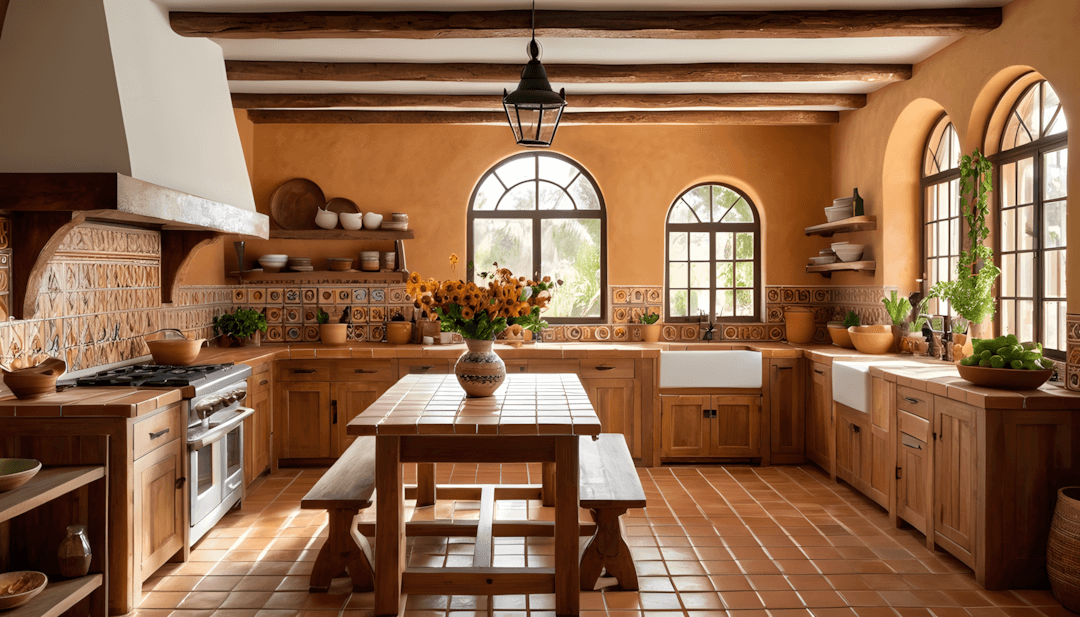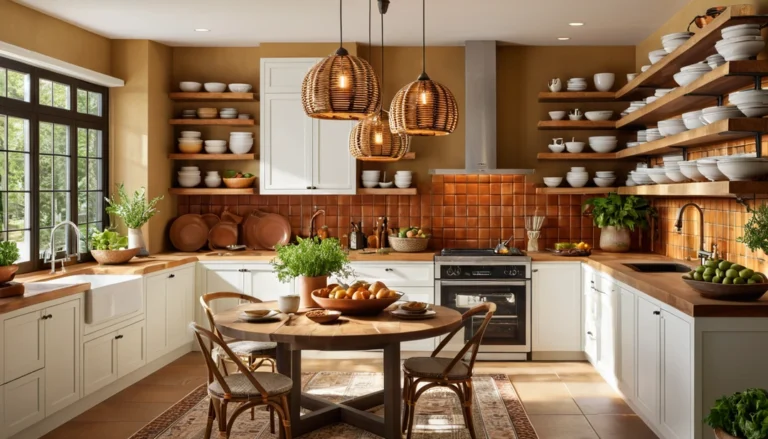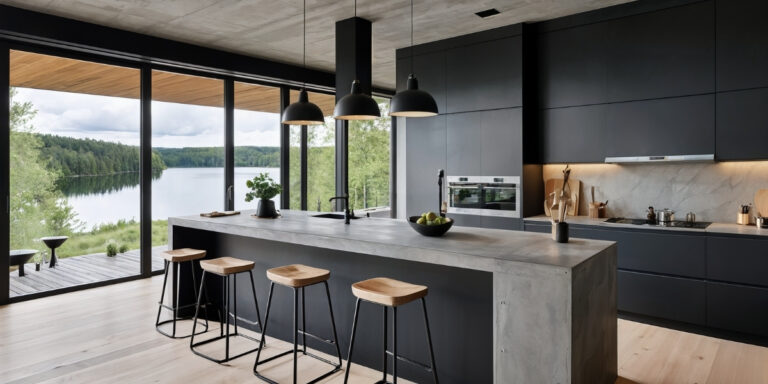In my experience working with homeowners on kitchen renovations, I’ve observed that hacienda-style kitchens often provide rich foundations for creating warm, welcoming cooking spaces.
Through various projects, I’ve learned that this design approach typically combines Spanish and Mexican architectural traditions with contemporary functionality to create environments that feel both historically grounded and practically suited for modern family life.
Note: For any structural modifications, electrical work, plumbing adjustments, or installations mentioned in this article, always consult with licensed professionals to ensure safety and code compliance.
What makes hacienda-style kitchens particularly appealing is their emphasis on natural materials, artisanal craftsmanship, and warm color palettes that create inviting environments for both cooking and gathering. I’ve found that homeowners often choose this approach because it typically provides timeless appeal while incorporating elements that develop character and patina over time.
The key to successful hacienda-style kitchen design often lies in balancing authentic materials and traditional details with modern appliances and contemporary storage solutions. Effective hacienda-inspired kitchens typically feature handcrafted elements, natural textures, and architectural details that create character while maintaining the functionality necessary for contemporary cooking and entertaining.
Here are 25 hacienda kitchen approaches that often work well in different home environments, based on observations from various renovation projects.
1. Exposed Wooden Beam Integration
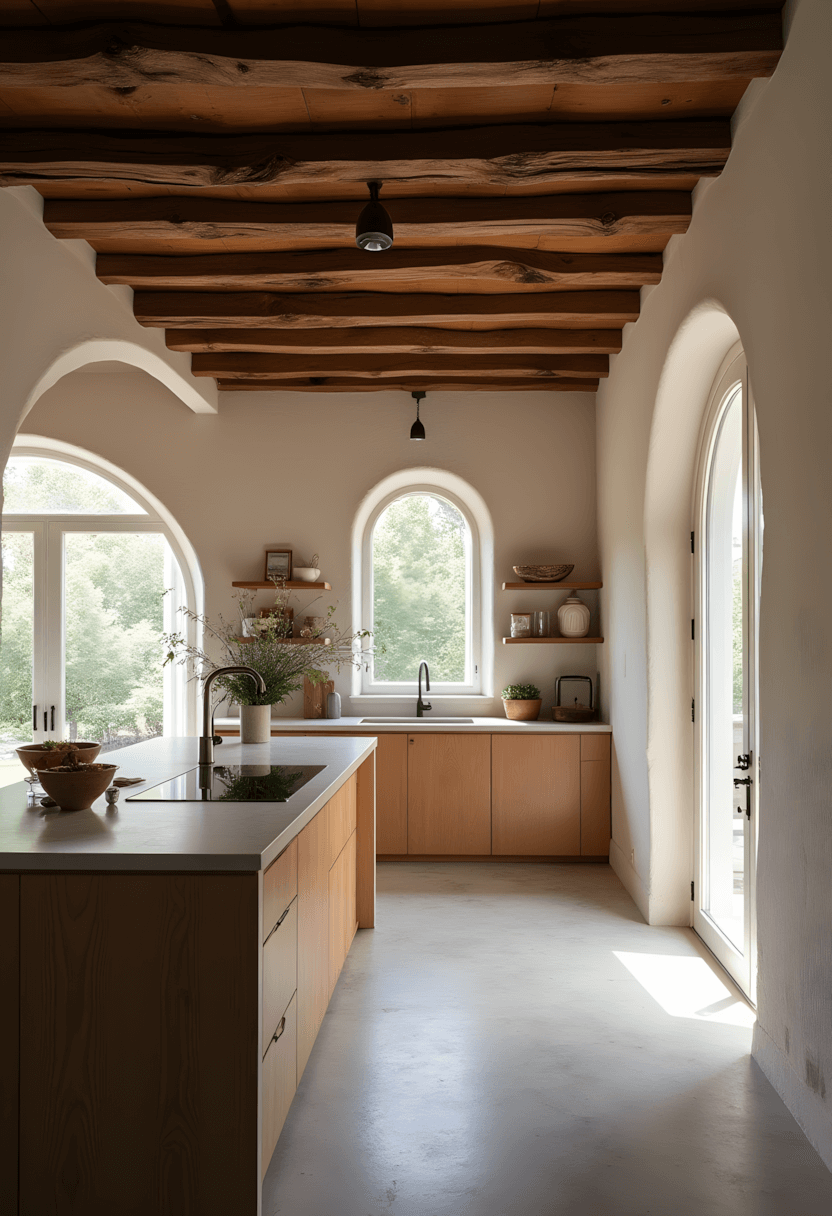
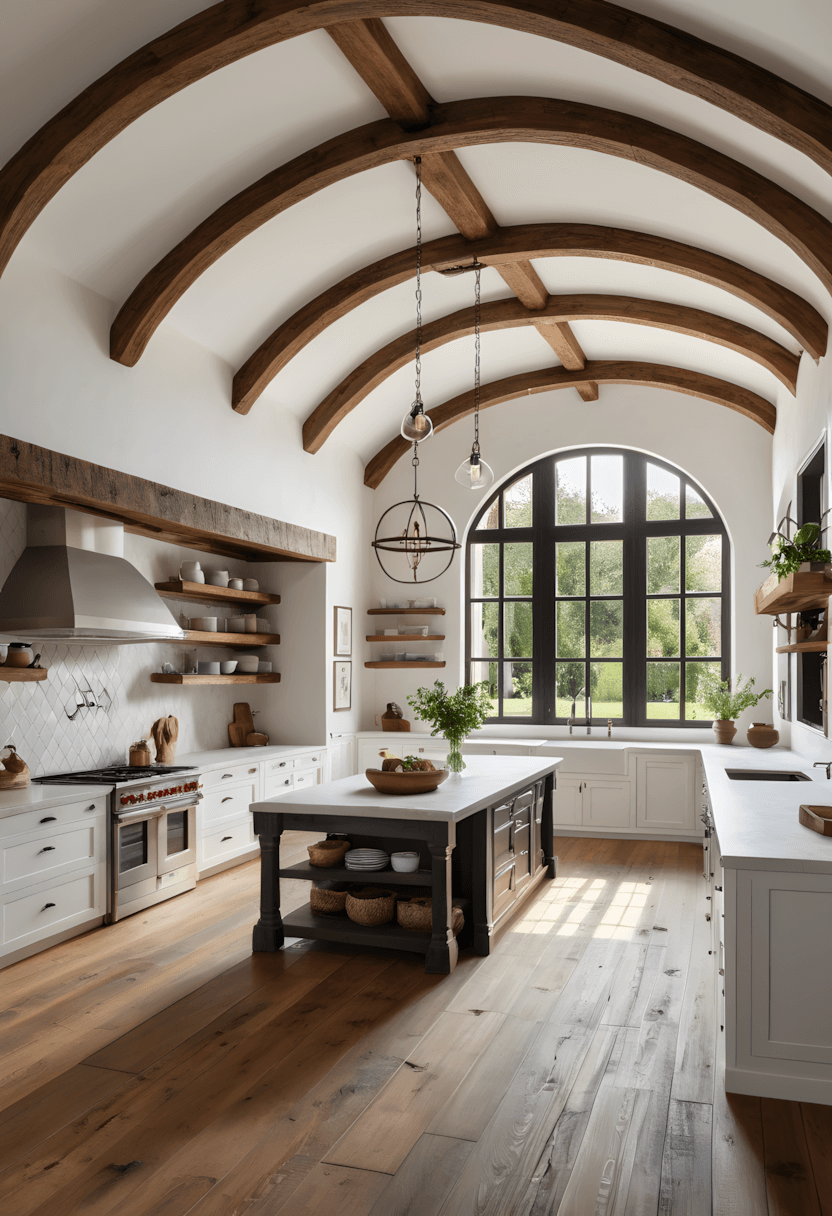
This architectural approach often appeals to homeowners wanting dramatic ceiling treatments that add character and warmth. Exposed wooden beams typically create visual weight and historical character while defining kitchen spaces.
Design consideration: Dark, substantial beams often work best with lighter wall colors to maintain balance and prevent spaces from feeling heavy or oppressive.
Material selection: Reclaimed wood often provides authentic character and sustainability benefits while adding genuine historical appeal.
2. Traditional Saltillo Tile Flooring
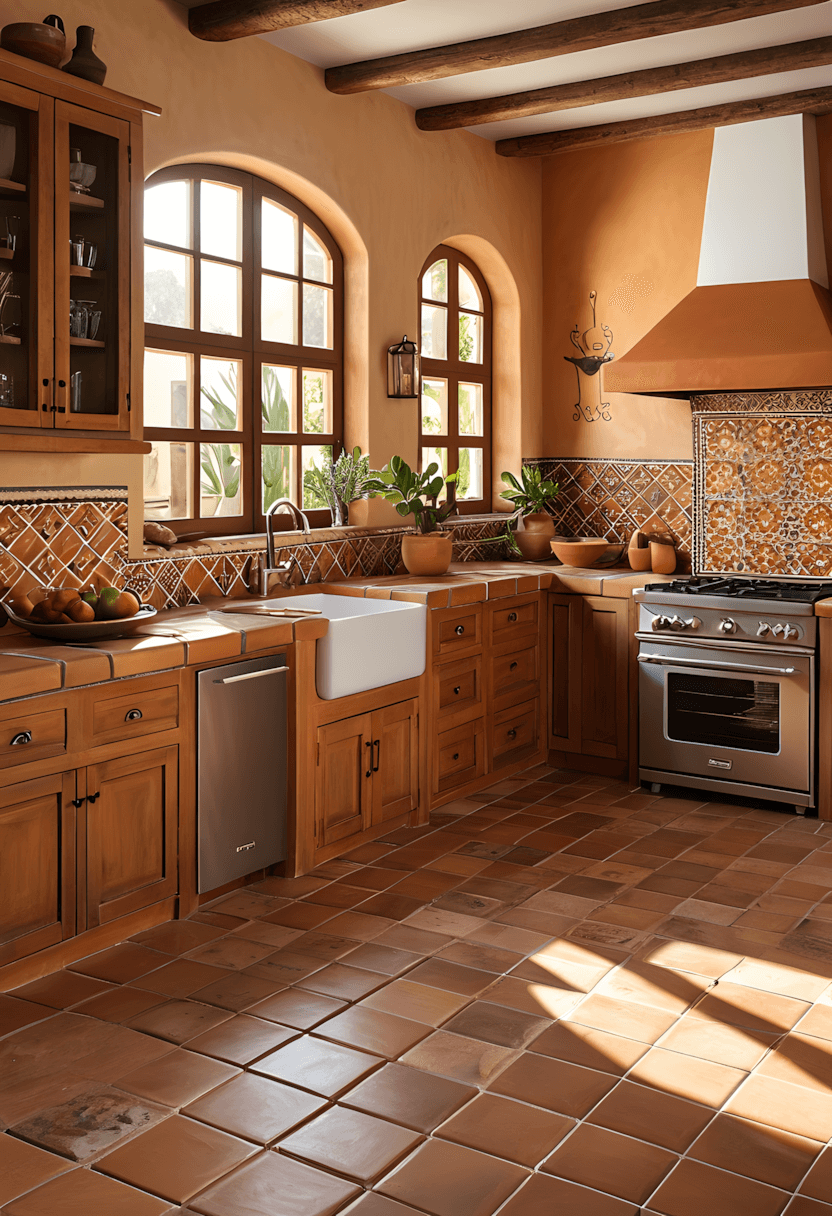
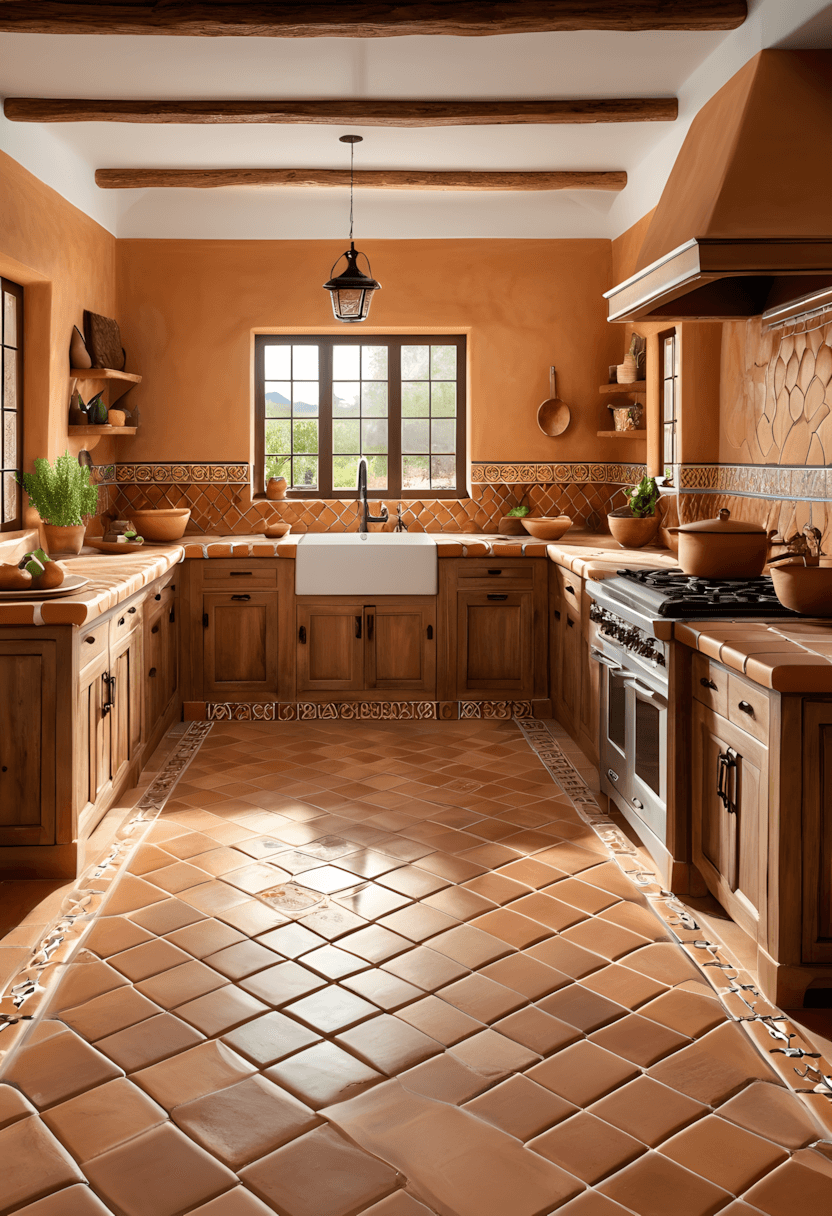
This foundational approach often works well for homeowners wanting authentic, durable flooring with natural variation. Saltillo tiles typically provide warm, earthy foundations that improve with age and use.
Design benefit: Each tile’s natural imperfections often add character that mass-produced materials cannot replicate.
Practical consideration: Proper sealing often becomes important for maintaining appearance and functionality in kitchen environments.
3. Hand-Painted Talavera Tile Accents

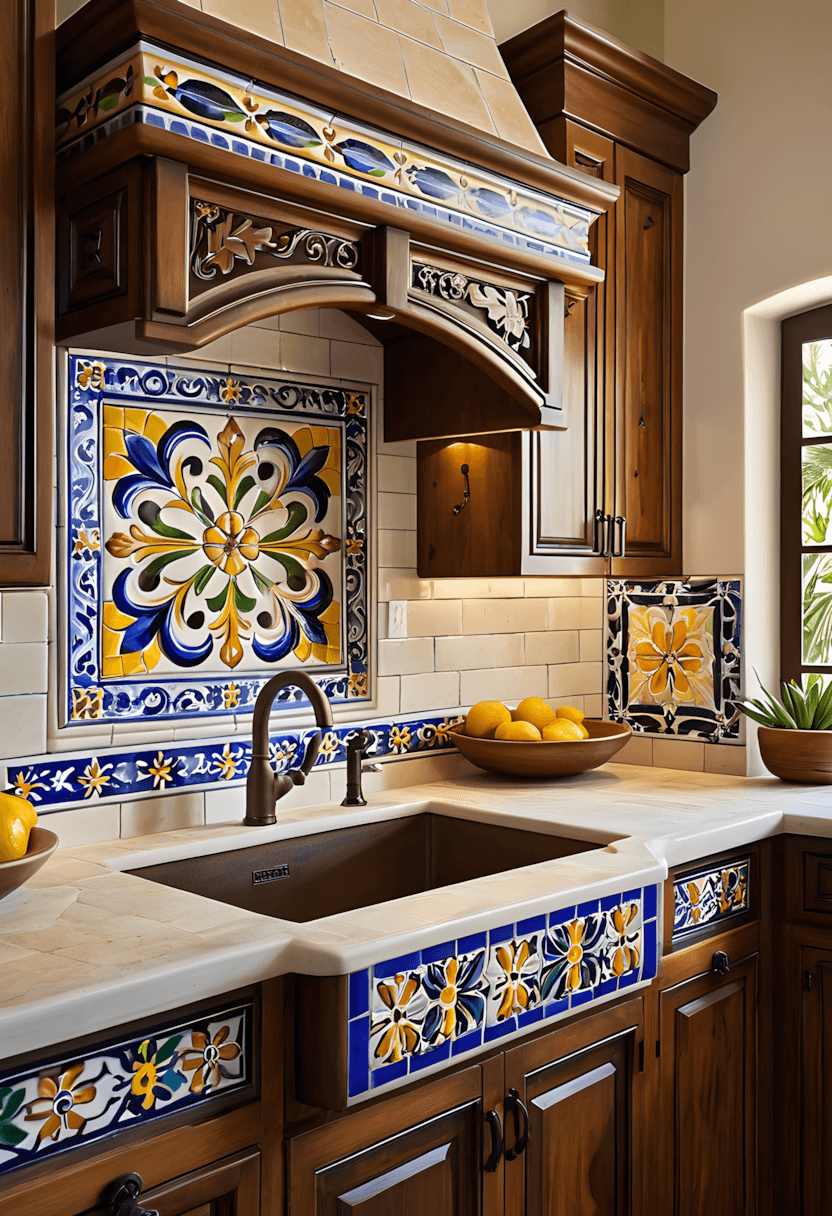
This artistic approach often appeals to homeowners wanting colorful, authentic decorative elements. Talavera tiles typically provide vibrant focal points while maintaining cultural authenticity and artisanal quality.
Design application: Backsplashes or accent areas often showcase these tiles effectively without overwhelming the overall design.
Cultural authenticity: Genuine Talavera pottery techniques often provide superior quality and authentic character compared to mass-produced alternatives.
4. Wrought Iron Hardware and Fixtures
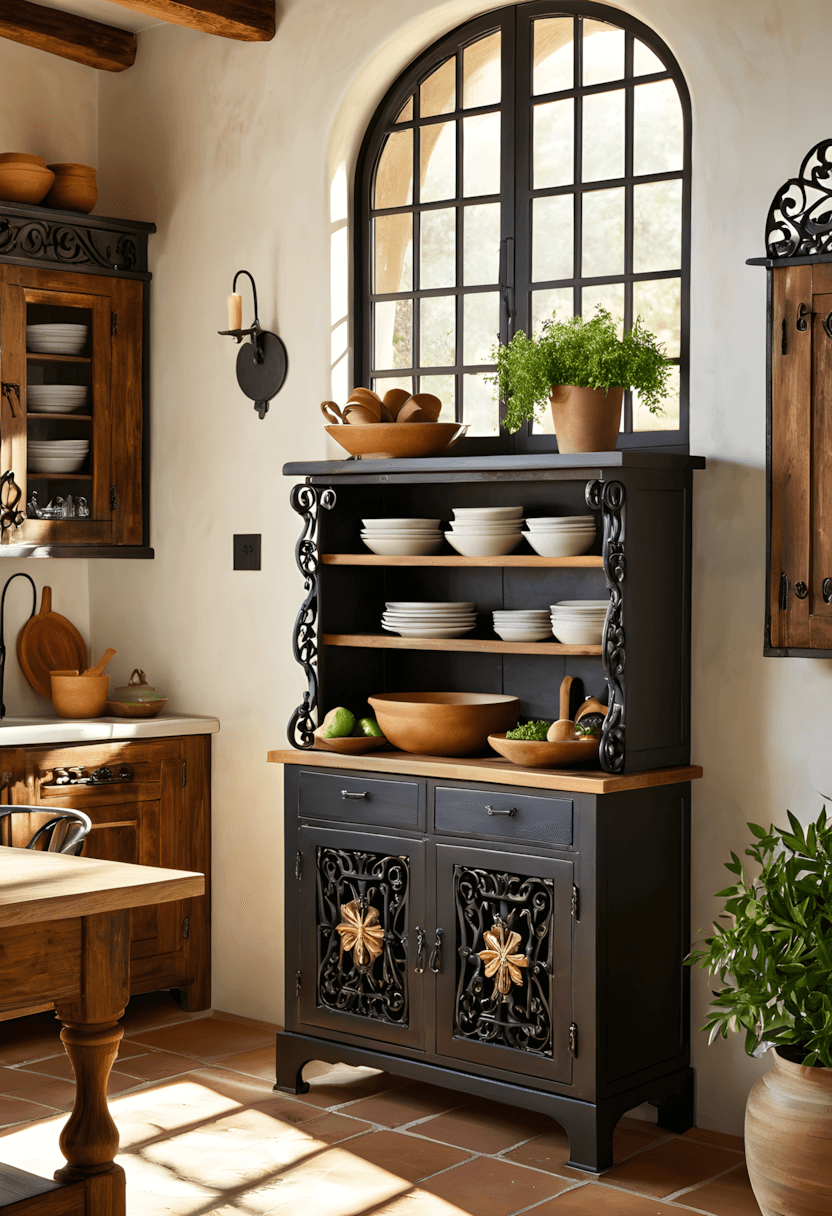
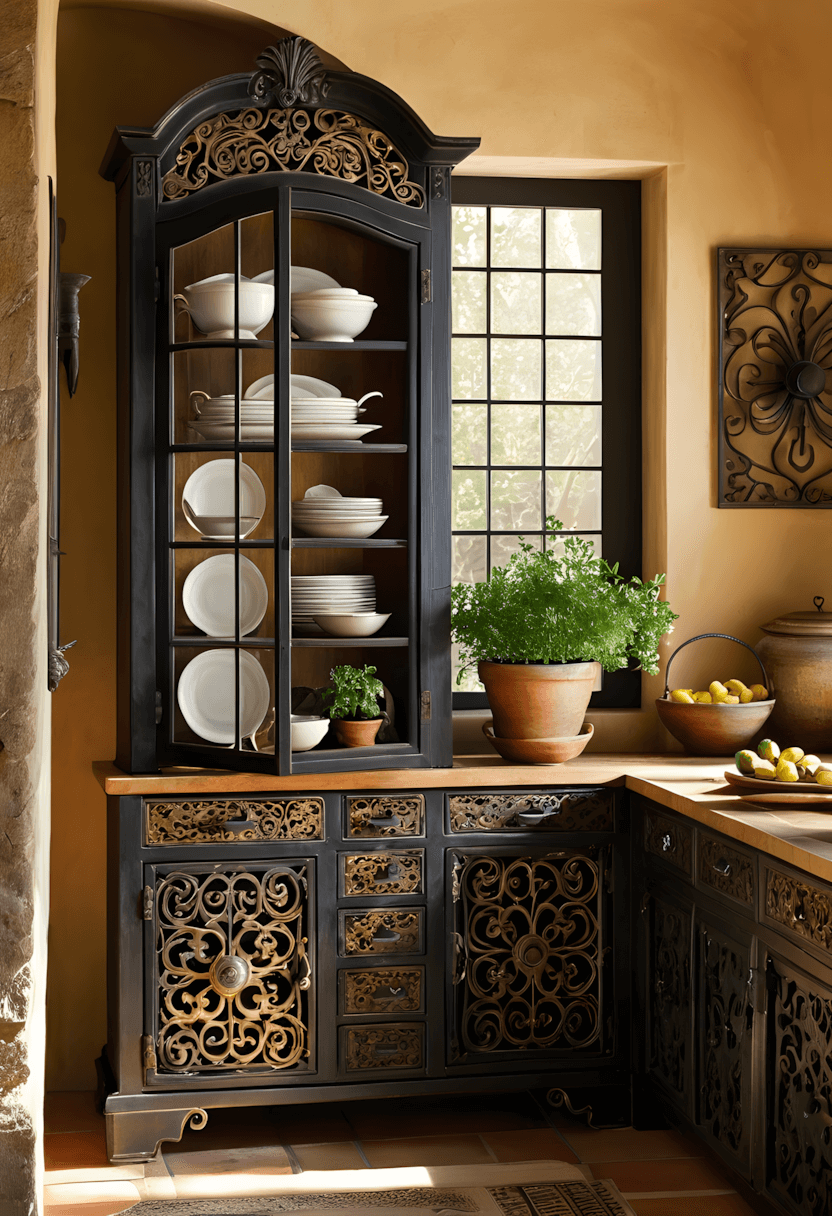
This metalwork approach often works well for homeowners appreciating handcrafted details and substantial, durable elements. Wrought iron typically adds authentic character while providing functional benefits.
Design cohesion: Using wrought iron consistently across lighting, hardware, and accessories often creates unified design themes.
Durability benefit: Quality wrought iron often lasts generations while developing attractive patina that enhances rather than detracts from appearance.
5. Arched Architectural Elements
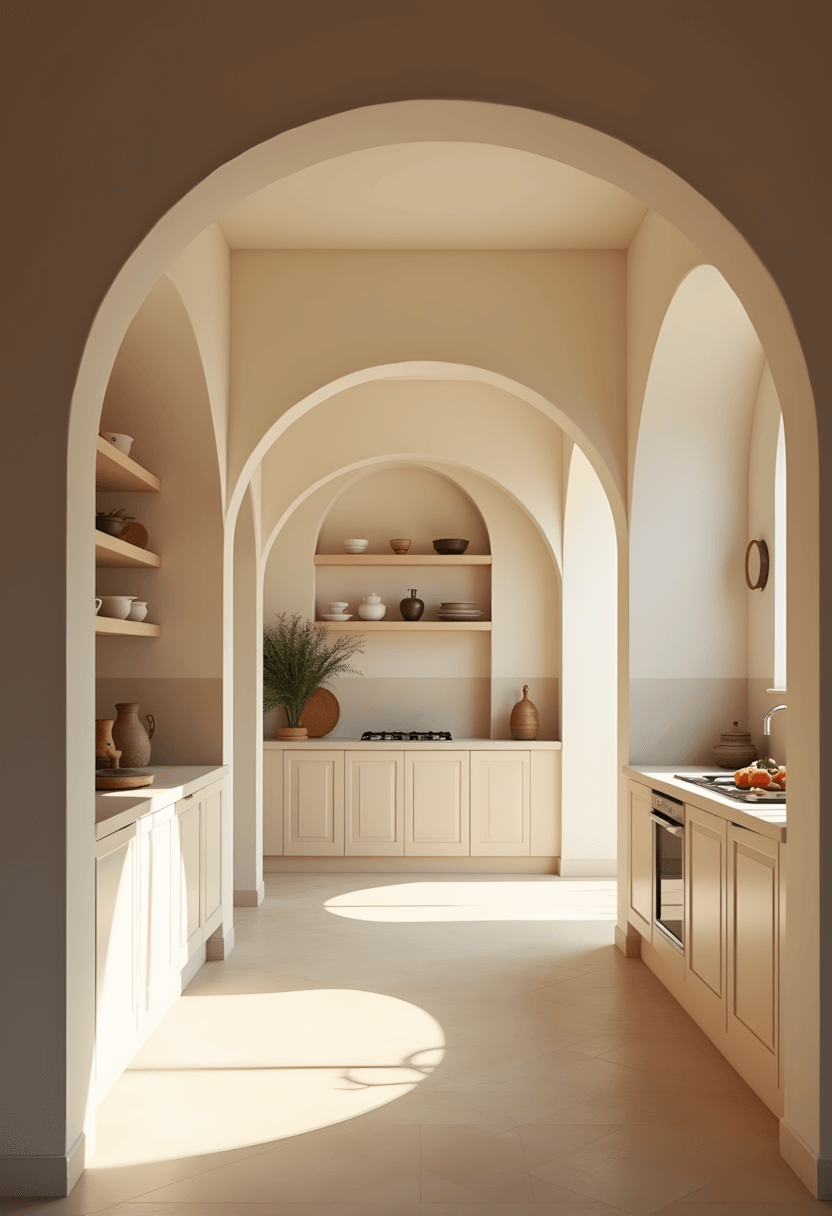
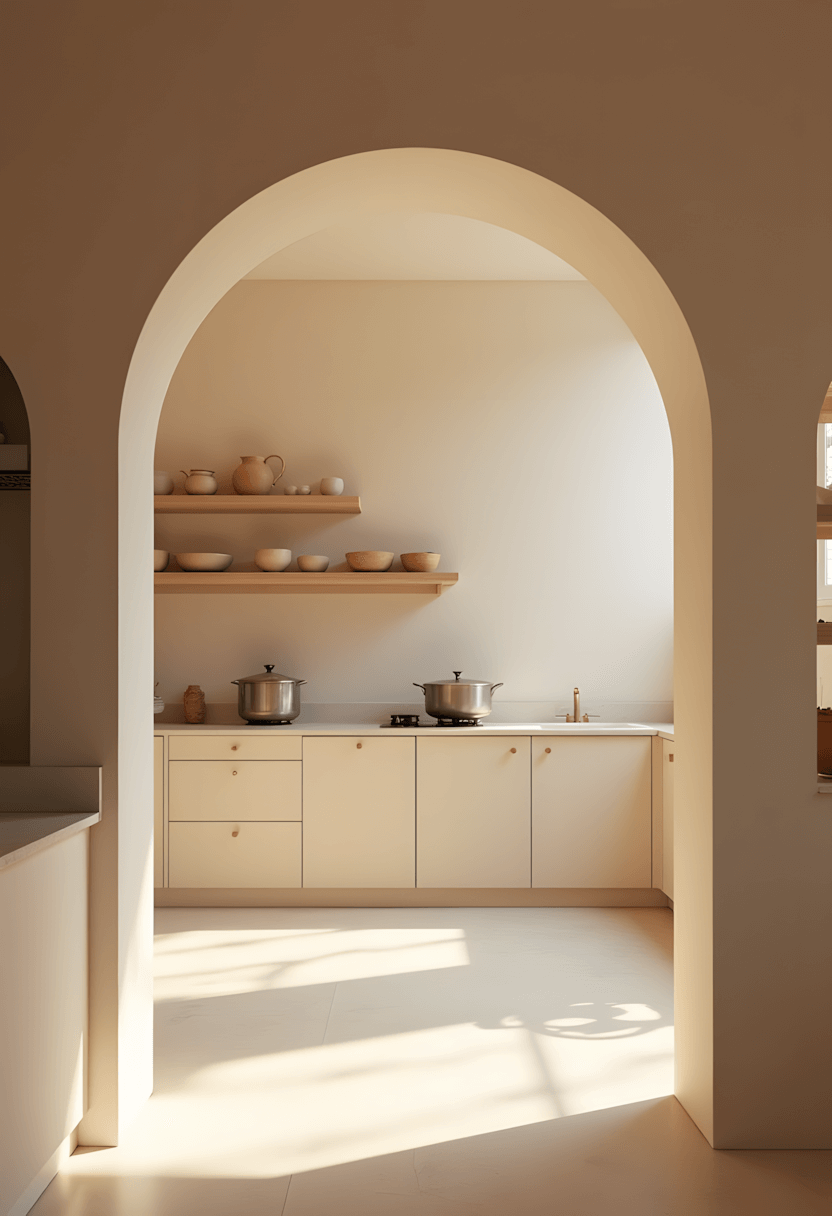
This structural approach often appeals to homeowners wanting soft, elegant architectural details. Arched doorways and alcoves typically add traditional character while creating visual interest and functional storage.
Design benefit: Curves often soften kitchen environments that might otherwise feel too angular or industrial.
Practical application: Built-in alcoves often provide attractive display space for pottery, spices, or decorative elements.
6. Farmhouse-Style Sink Integration
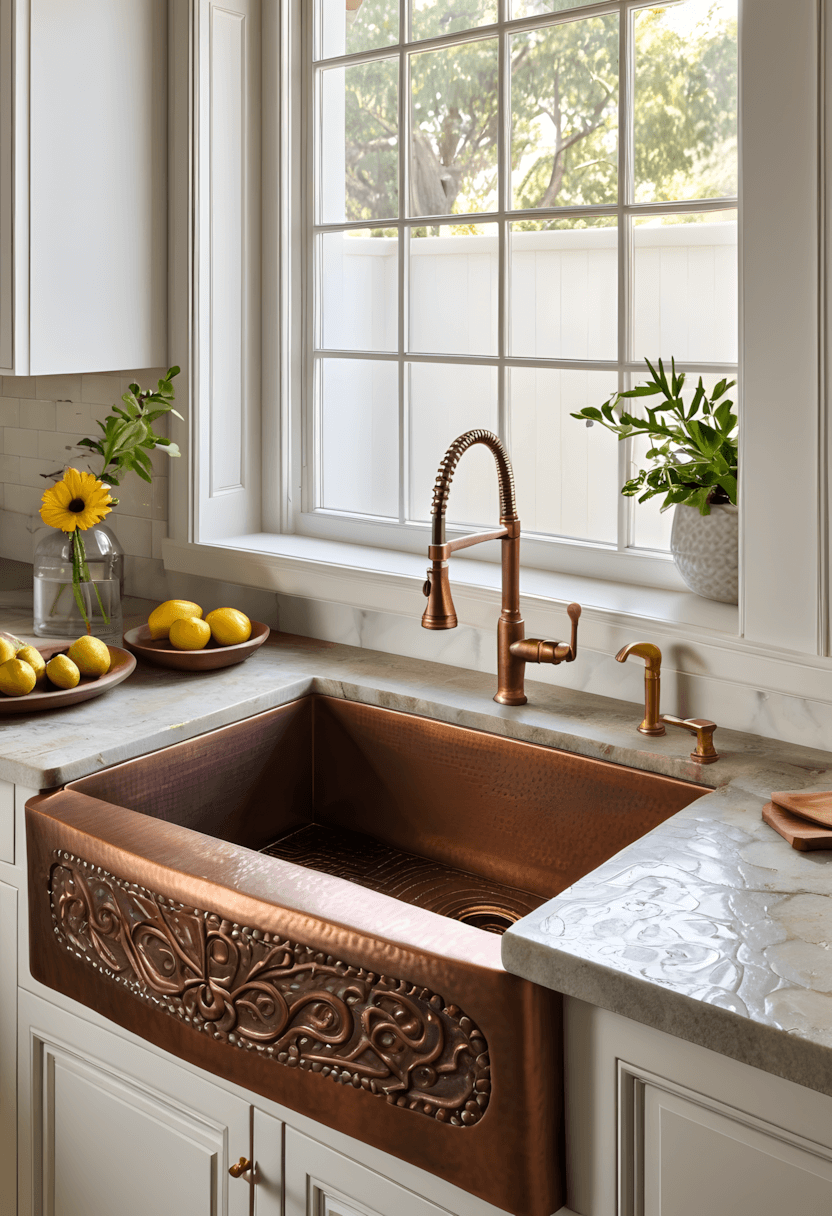
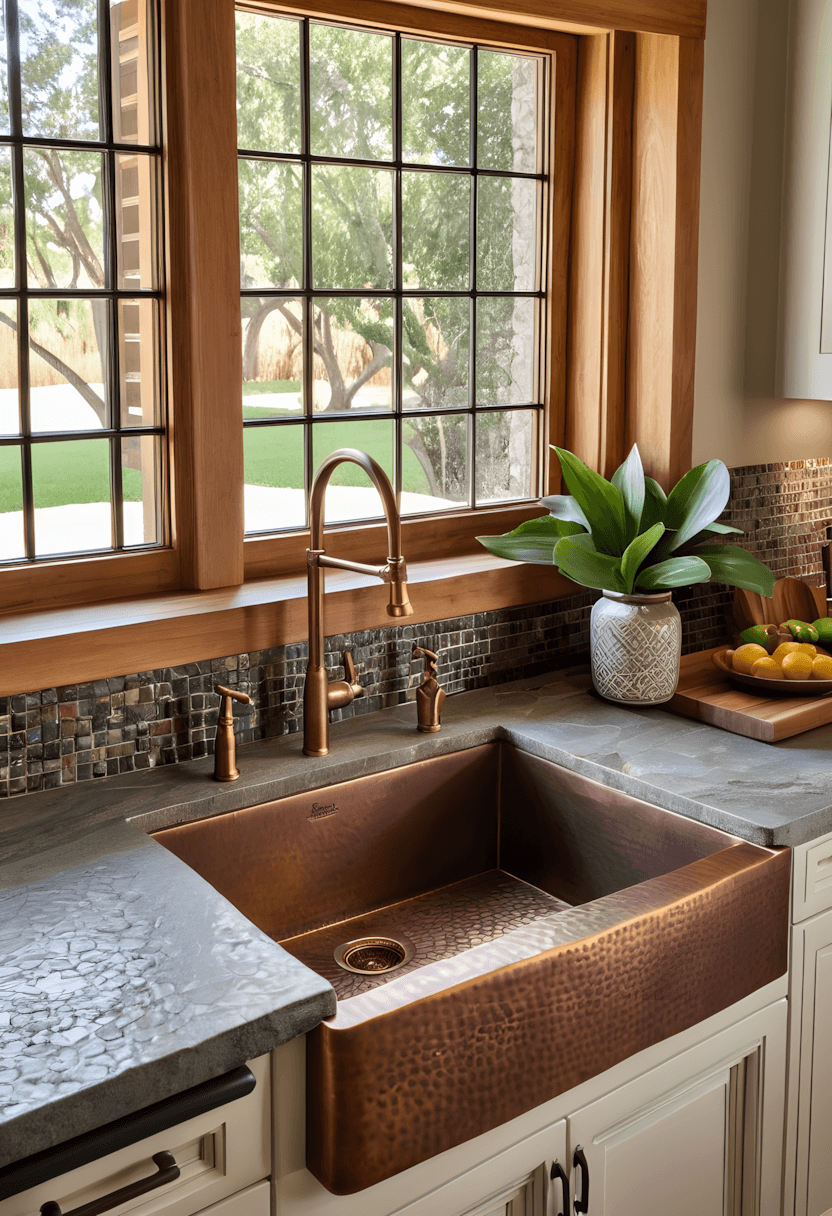
This functional approach often works well for homeowners wanting both practical benefits and authentic style. Apron-front sinks typically provide large, accessible washing areas while serving as design focal points.
Material options: Hammered copper or fireclay often provide authentic character while offering different maintenance and durability characteristics.
Style coordination: Vintage-style faucets often complement farmhouse sinks while maintaining historical authenticity.
7. Vintage Lantern Lighting
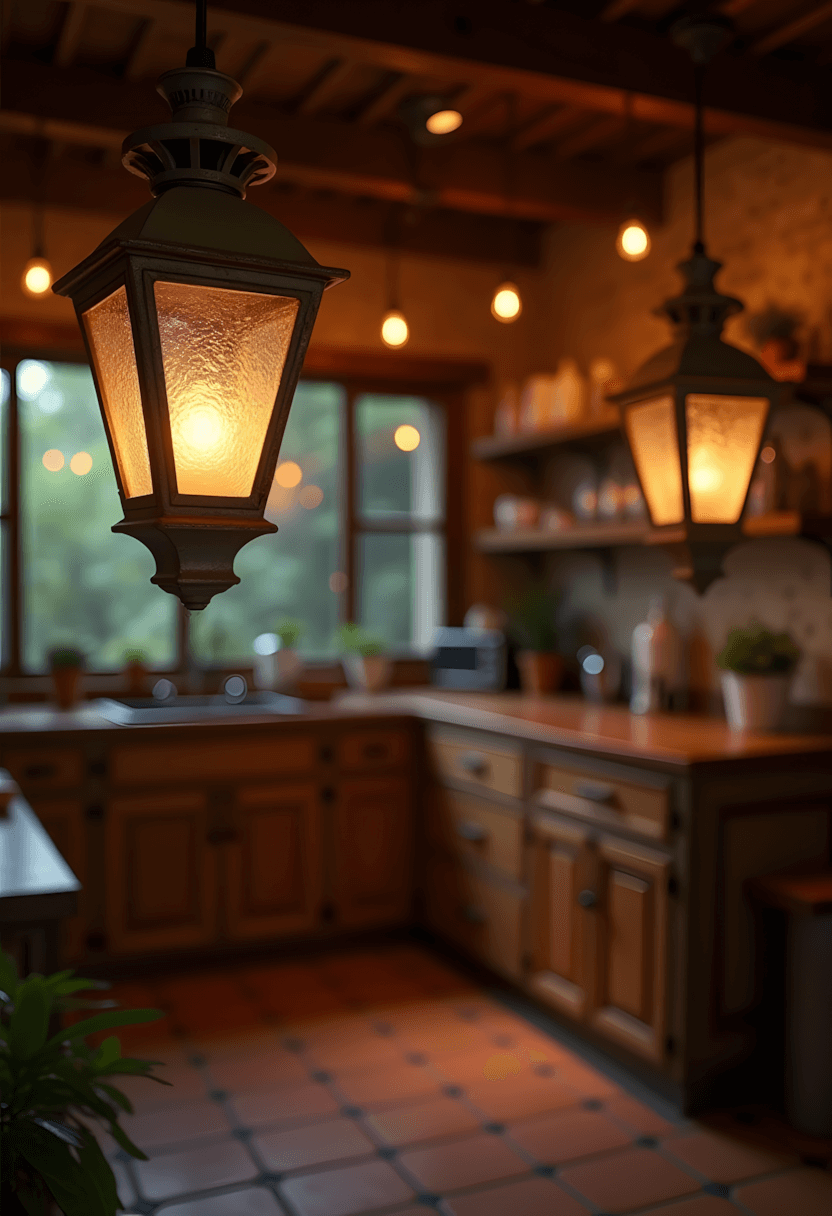
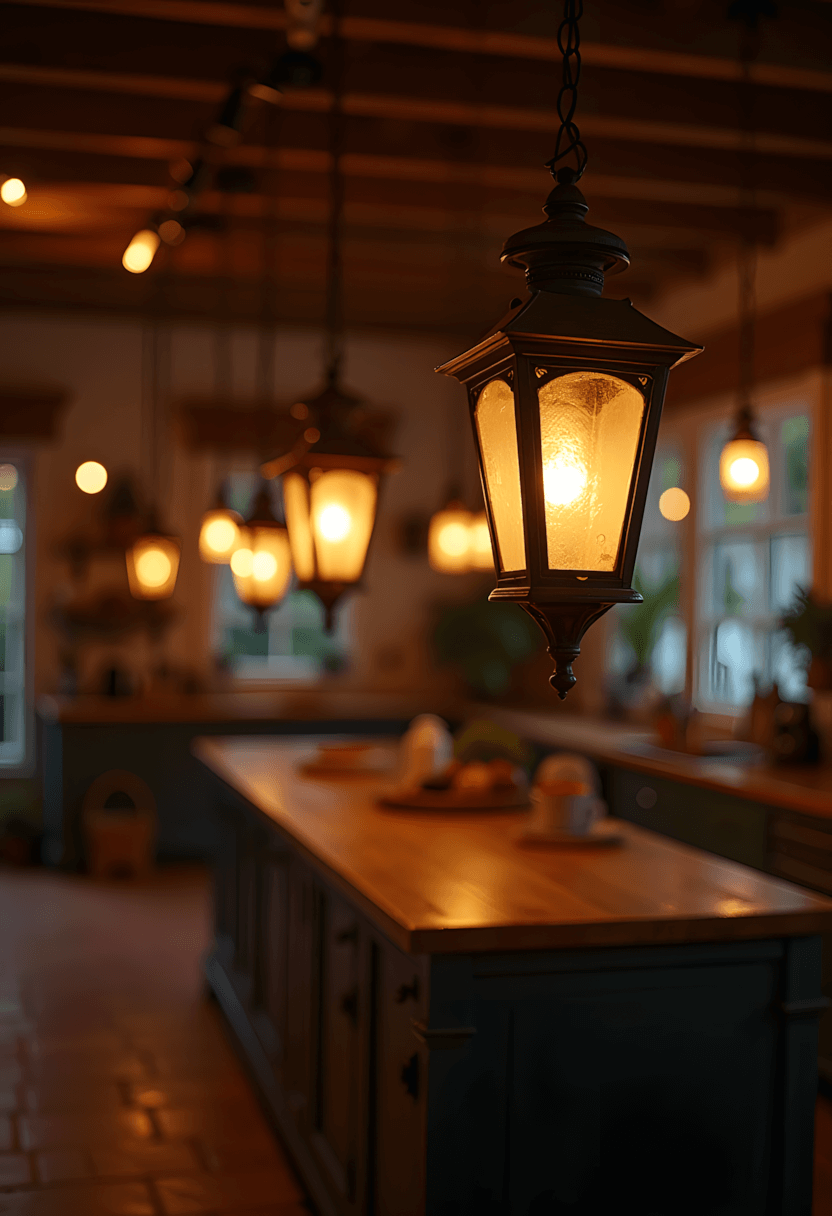
This atmospheric approach often appeals to homeowners wanting warm, welcoming illumination. Lantern-style fixtures typically provide ambient lighting while adding authentic period character.
Design strategy: Single large fixtures or grouped smaller ones often work effectively depending on kitchen size and layout requirements.
Light quality: Warm light sources often enhance the natural materials and colors typical in hacienda-style kitchens.
8. Earthy Color Palette Integration
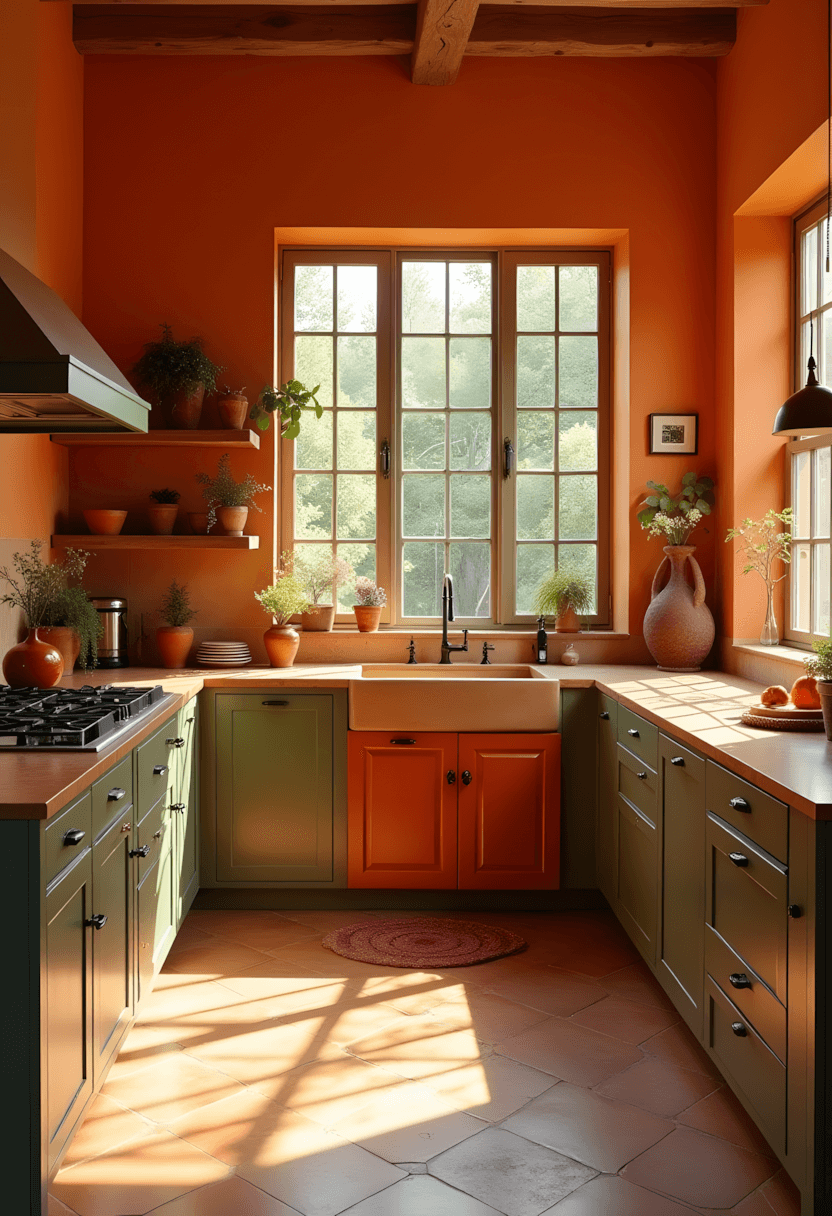
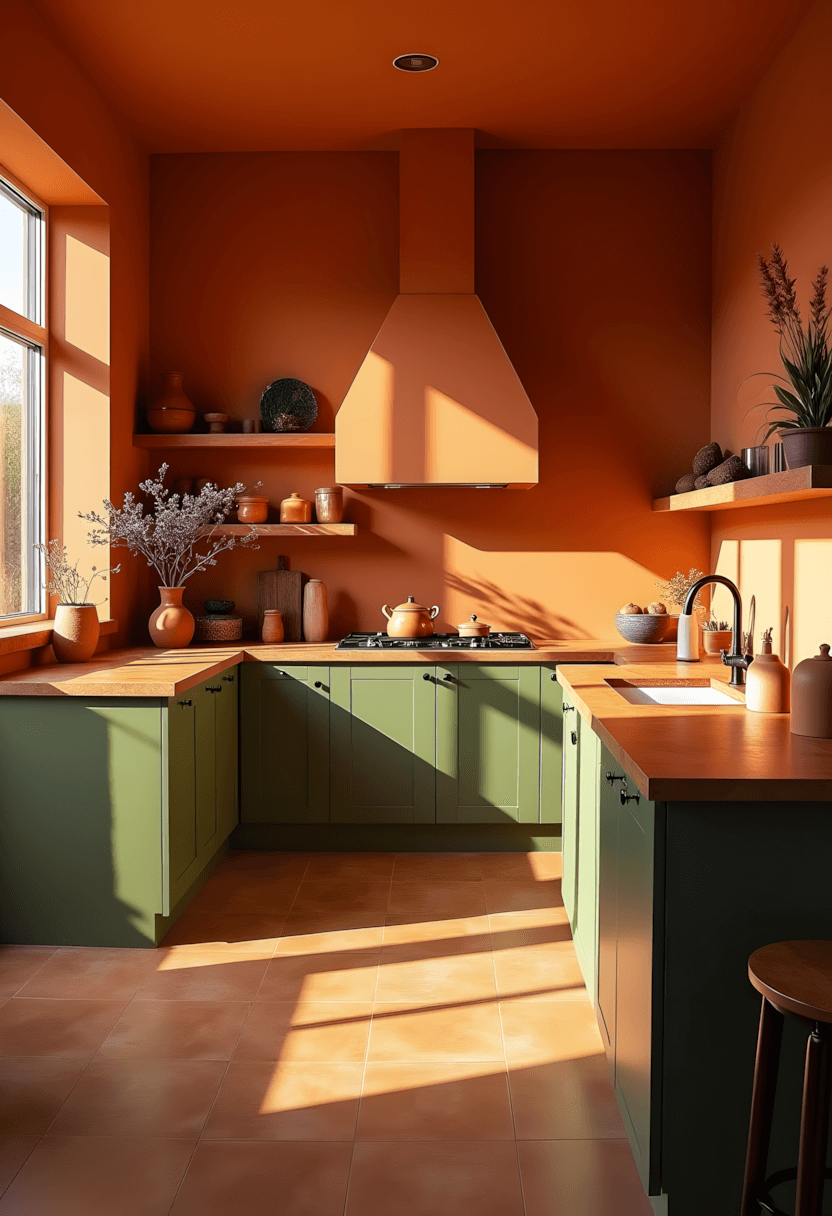
This foundational approach often works well for homeowners wanting authentic, nature-inspired environments. Traditional hacienda colors typically create warm, inviting atmospheres that feel connected to natural landscapes.
Color application: Walls, textiles, or accent pieces often provide opportunities to incorporate terracotta, deep reds, golden yellows, and olive greens.
Balance strategy: Subtle integration often works better than overwhelming color application for maintaining sophisticated rather than overwhelming results.
9. Natural Stone Countertop Selection
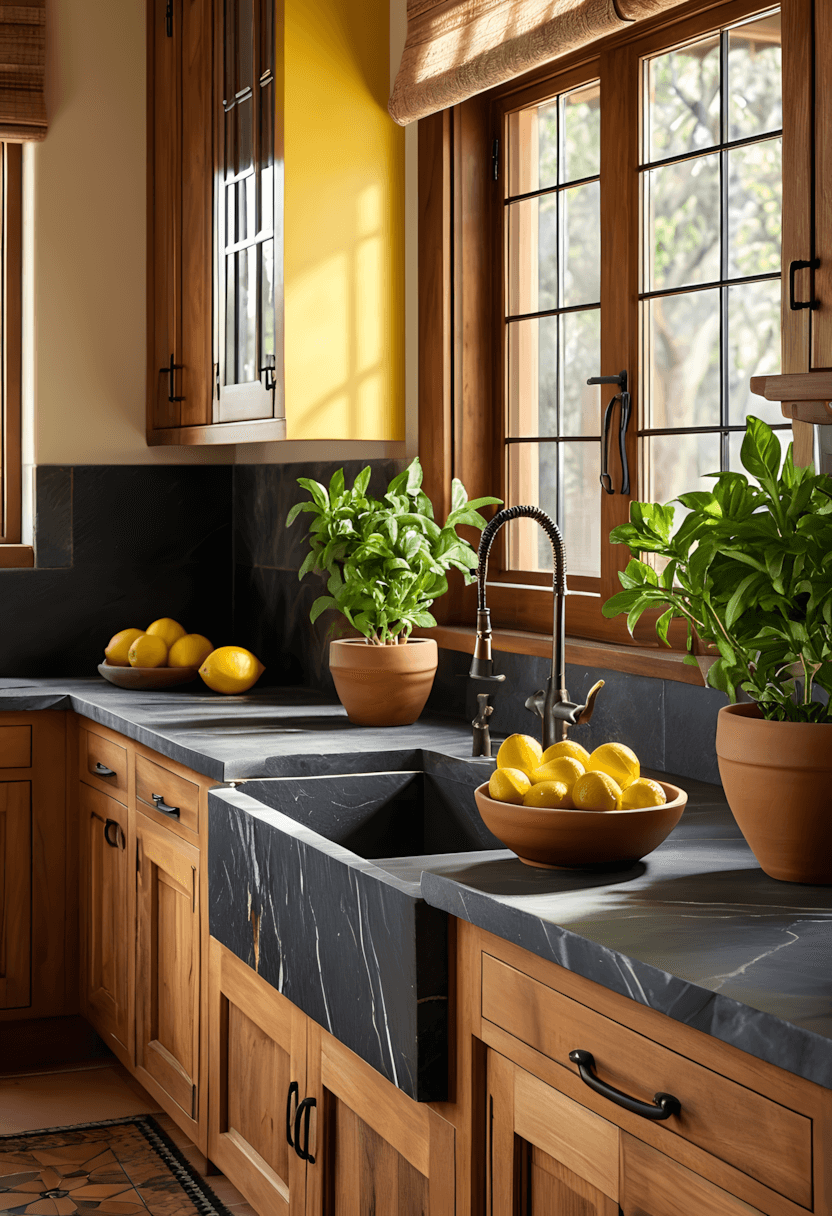

This durable approach often appeals to homeowners wanting practical surfaces that complement hacienda aesthetics. Natural stone typically provides both functionality and authentic character.
Material consideration: Granite, soapstone, or marble often work well while providing different maintenance requirements and visual characteristics.
Finish options: Textured or matte finishes often complement the rustic aesthetic better than high-gloss alternatives.
10. Open Shelving Display Strategy
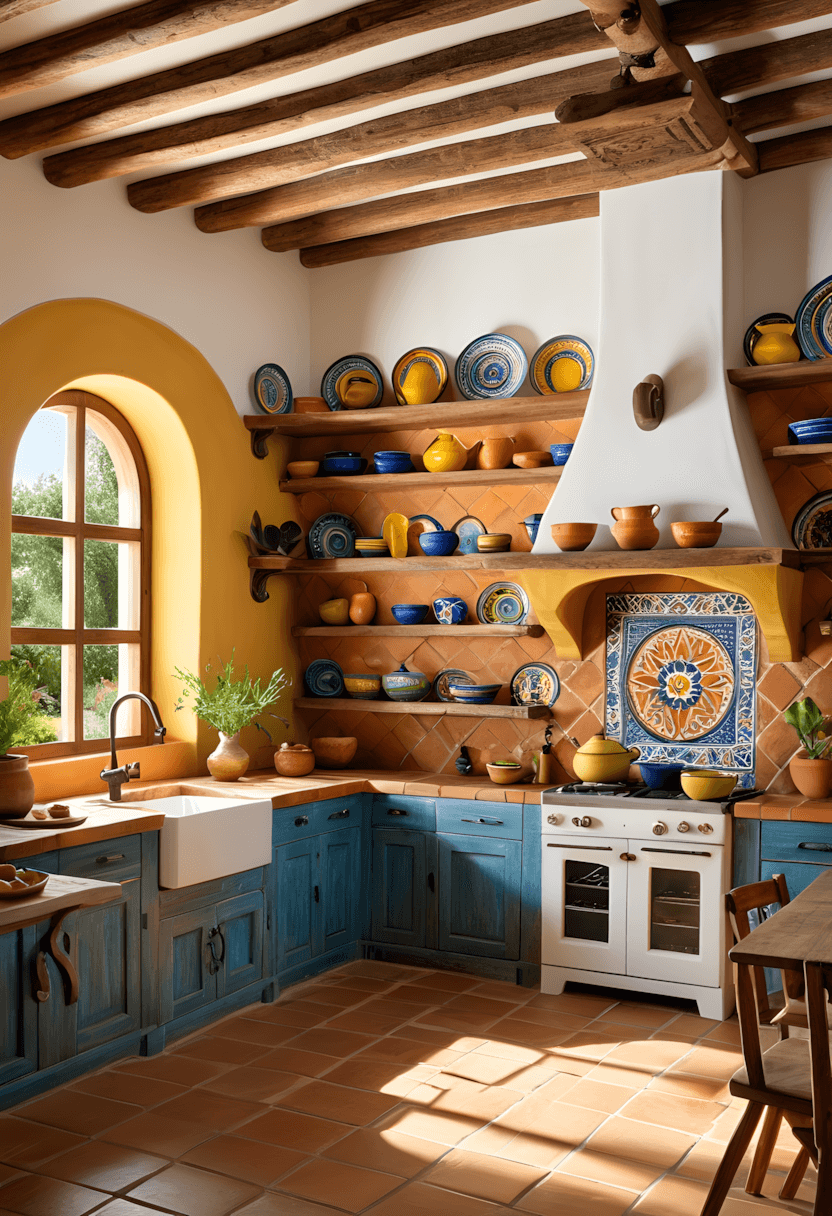
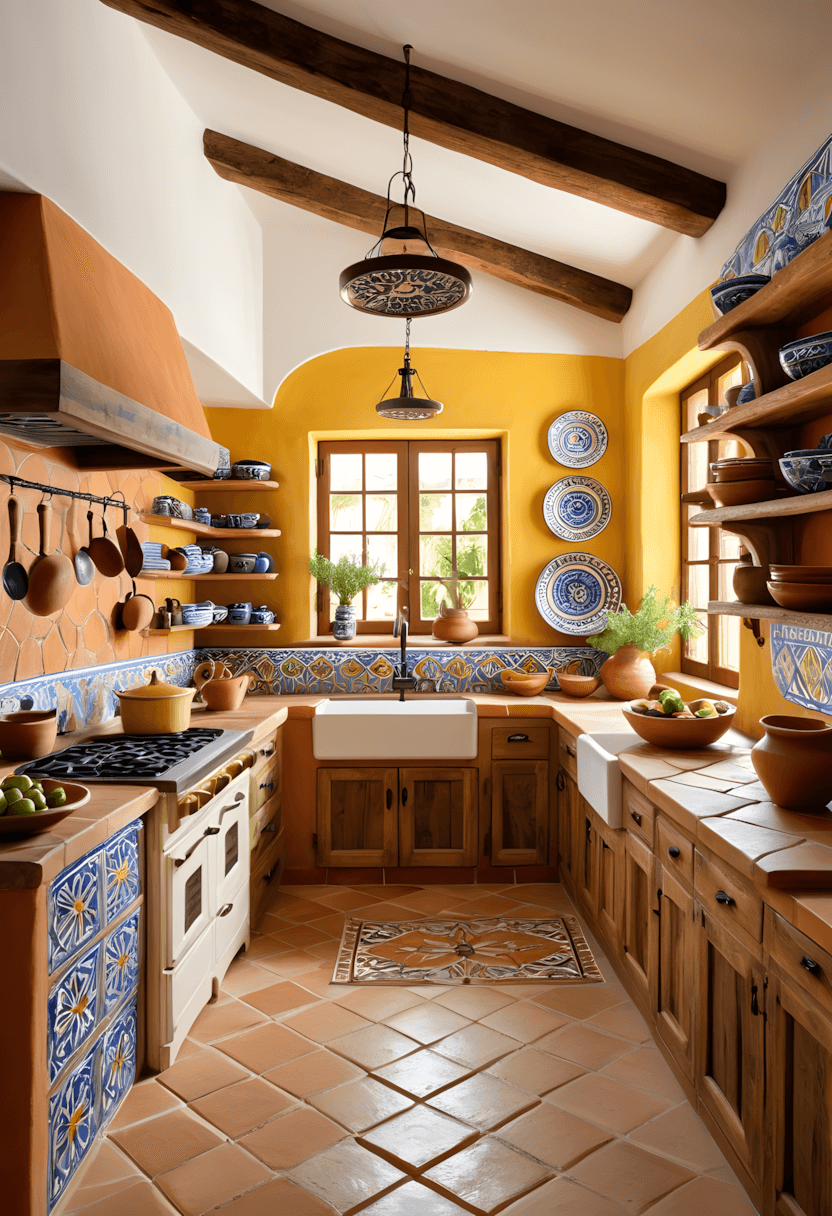
This functional approach often works well for homeowners wanting to showcase handcrafted pottery and kitchen items. Open wooden shelving typically creates opportunities for personal expression while maintaining practical storage.
Design benefit: This approach often makes kitchens feel more spacious while putting artisanal collections on attractive display.
Practical consideration: Easy access to frequently used items often makes open shelving both beautiful and functional.
11. Substantial Wooden Furniture
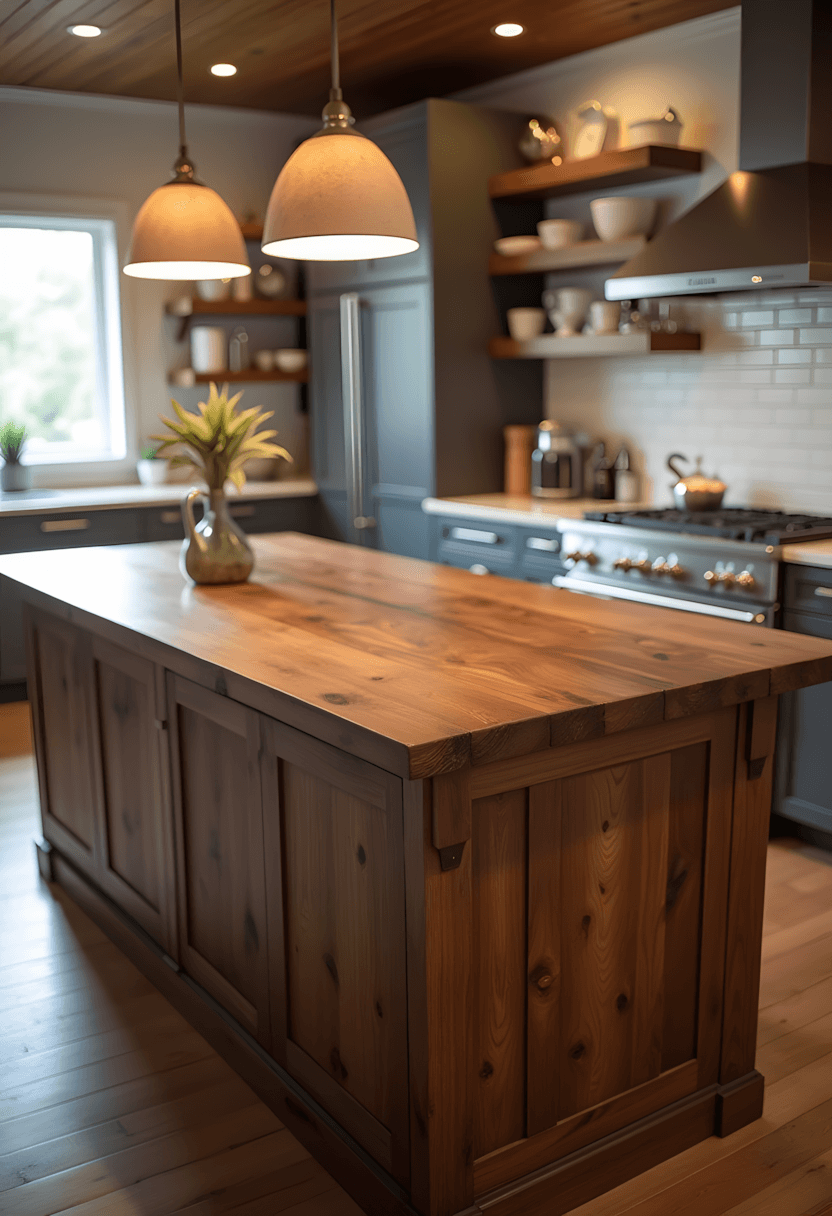
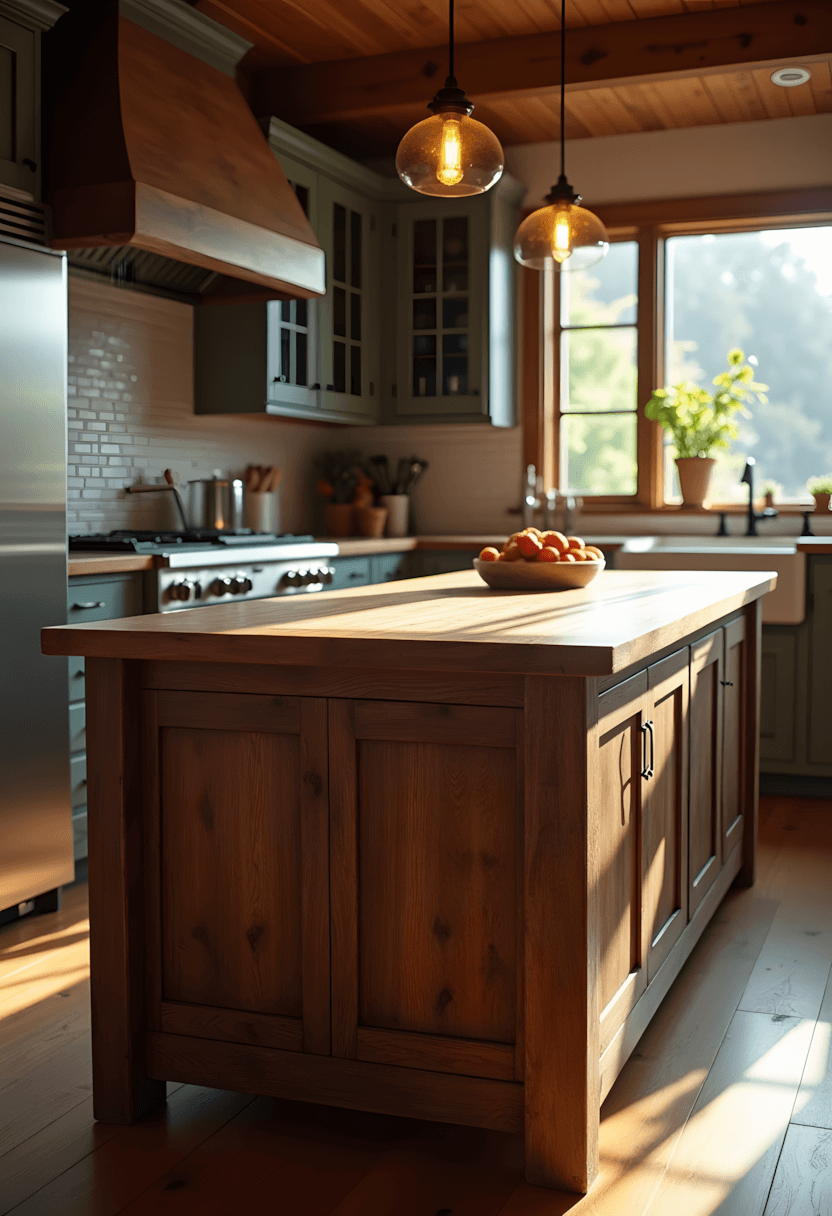
This furniture approach often appeals to homeowners wanting durable, impressive pieces that serve as kitchen focal points. Heavy wooden islands or tables typically provide both functionality and authentic character.
Material selection: Mahogany, walnut, or pine often provide different aesthetic qualities while maintaining durability for kitchen use.
Design balance: Pairing substantial wooden pieces with simpler seating often prevents kitchens from feeling overwhelming or cluttered.
12. Textured Stucco Wall Treatment
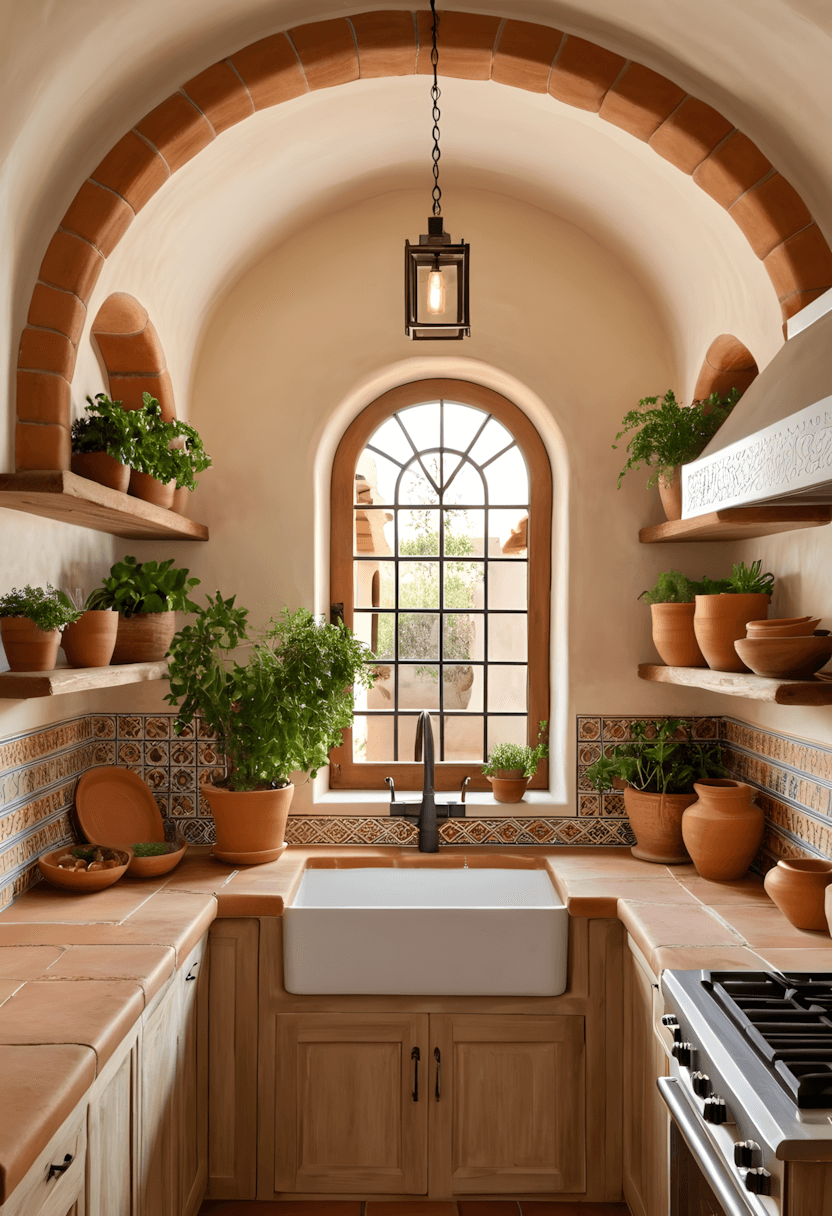
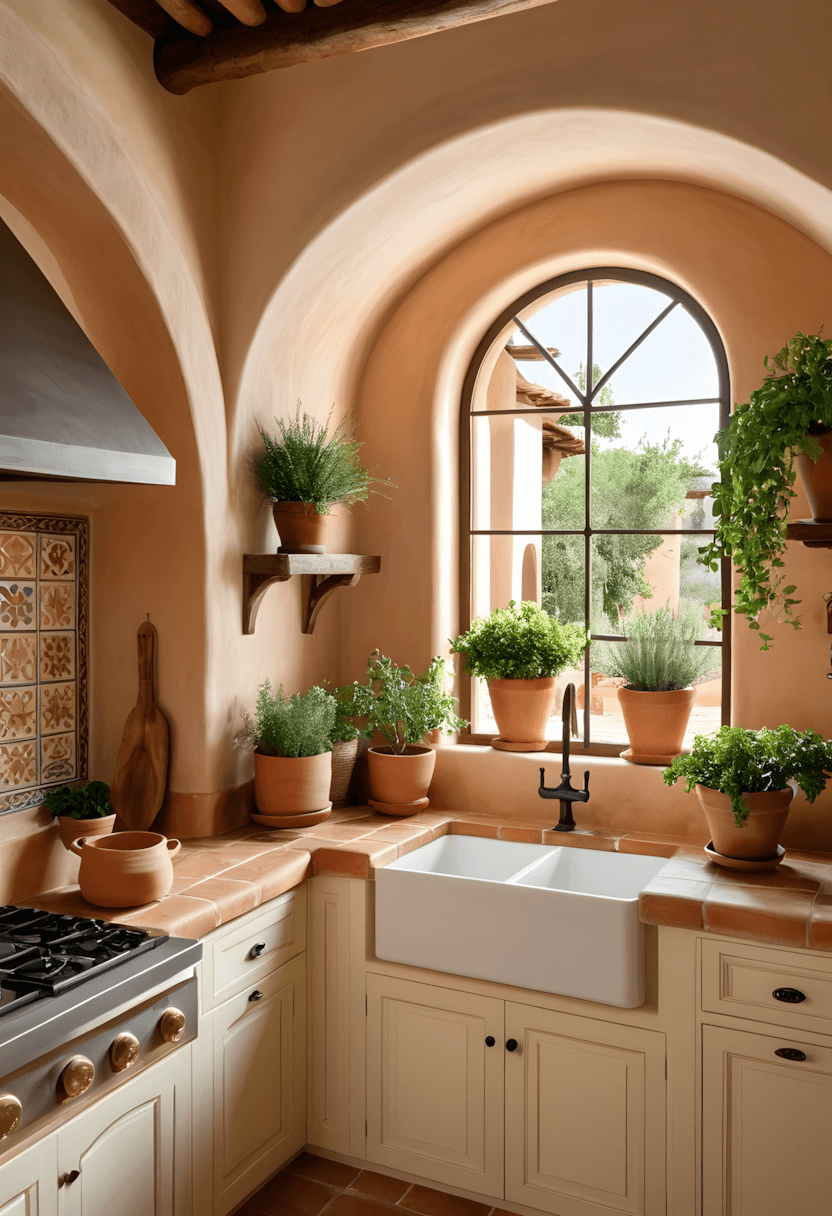
This architectural approach often works well for homeowners wanting authentic adobe-style surfaces. Stucco walls typically provide textural interest while creating foundations for built-in storage niches.
Design application: Built-in niches often provide attractive display opportunities while maintaining the authentic architectural character.
Practical benefit: Stucco often hides minor imperfections while providing durable, easy-to-maintain wall surfaces.
13. Copper Cookware Display
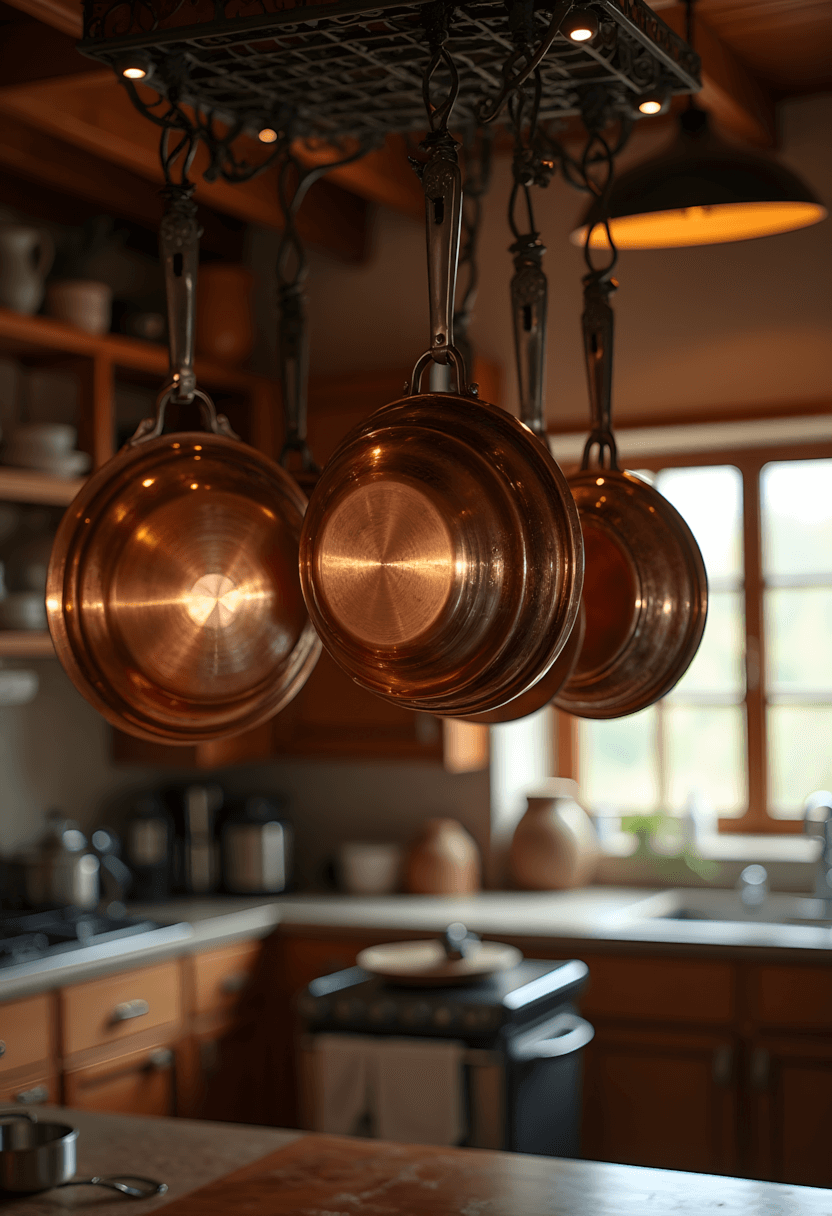
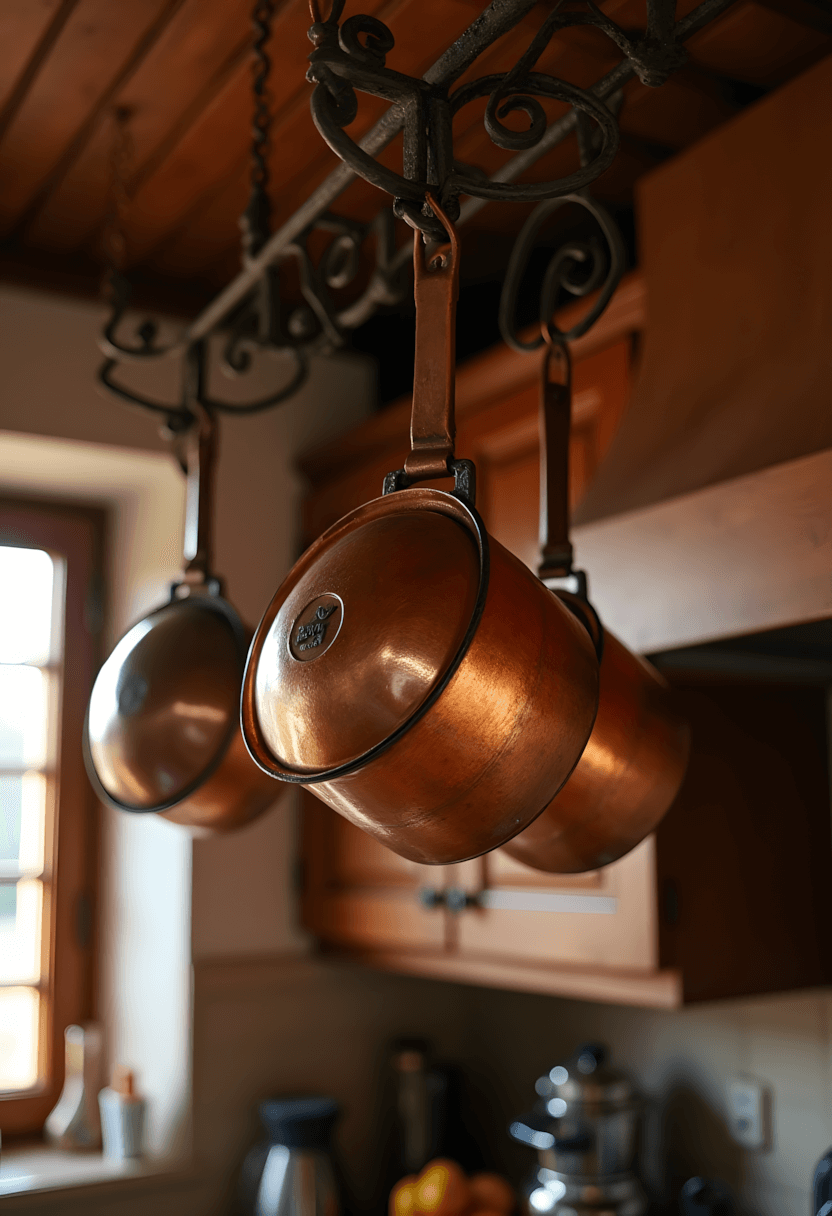
This functional approach often appeals to homeowners wanting both practical storage and authentic decorative elements. Displayed copper cookware typically adds old-world luxury while remaining accessible for cooking.
Design consideration: Hanging racks often keep cookware accessible while creating attractive displays that develop beautiful patina over time.
Maintenance benefit: Regular use often maintains copper’s appearance better than storage in cabinets where pieces may tarnish.
14. Statement Range Hood Design
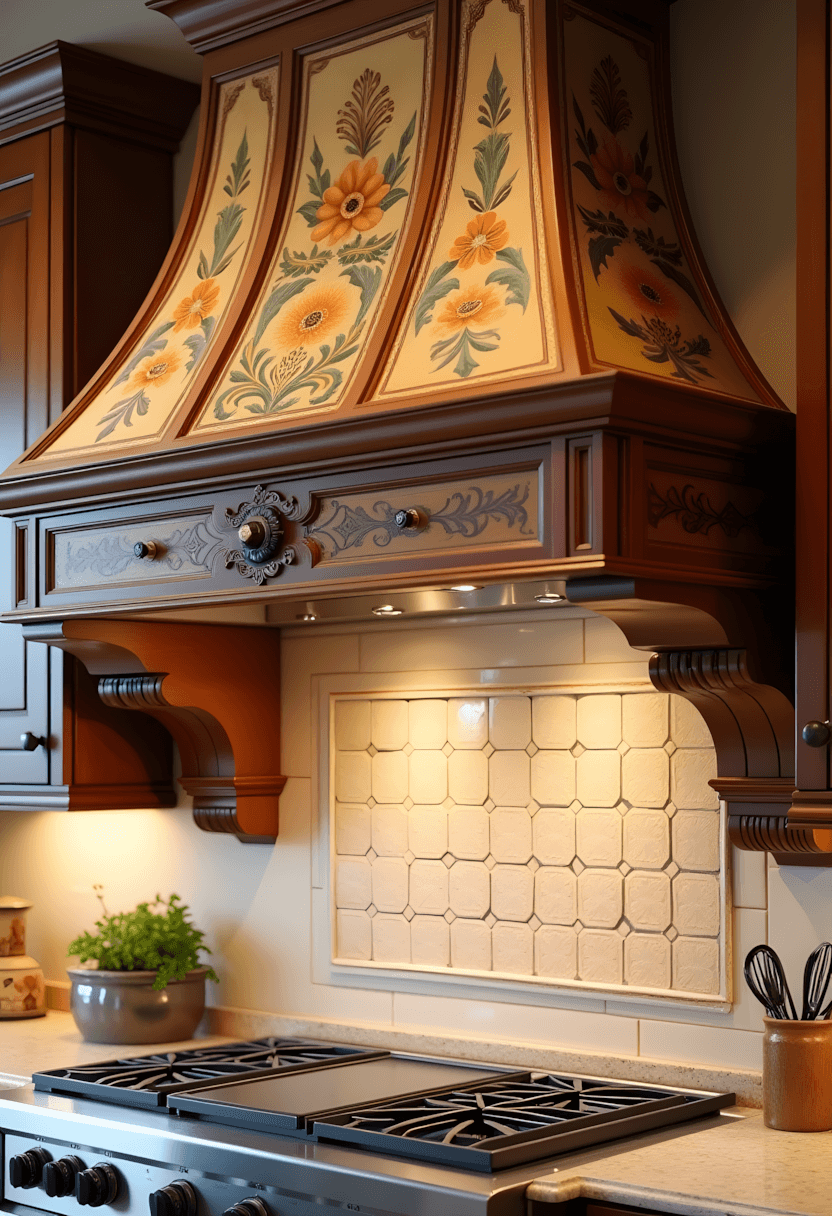
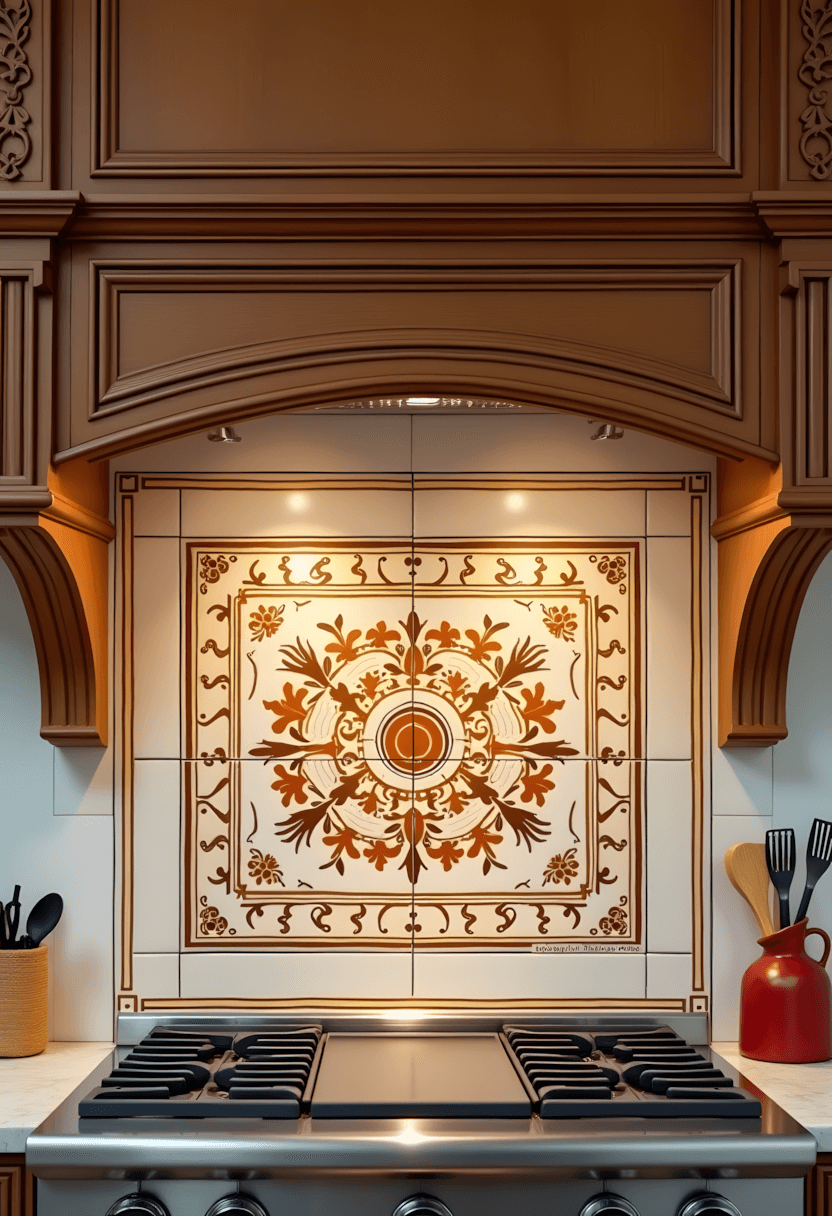
This focal approach often works well for homeowners wanting dramatic architectural elements. Decorative range hoods typically serve both functional and aesthetic purposes while anchoring kitchen designs.
Material options: Stone, brick, or decorative tile often provide different aesthetic qualities while maintaining authentic character.
Design integration: Hand-painted tiles or wrought iron details often tie range hoods into broader hacienda themes.
15. Handwoven Textile Integration
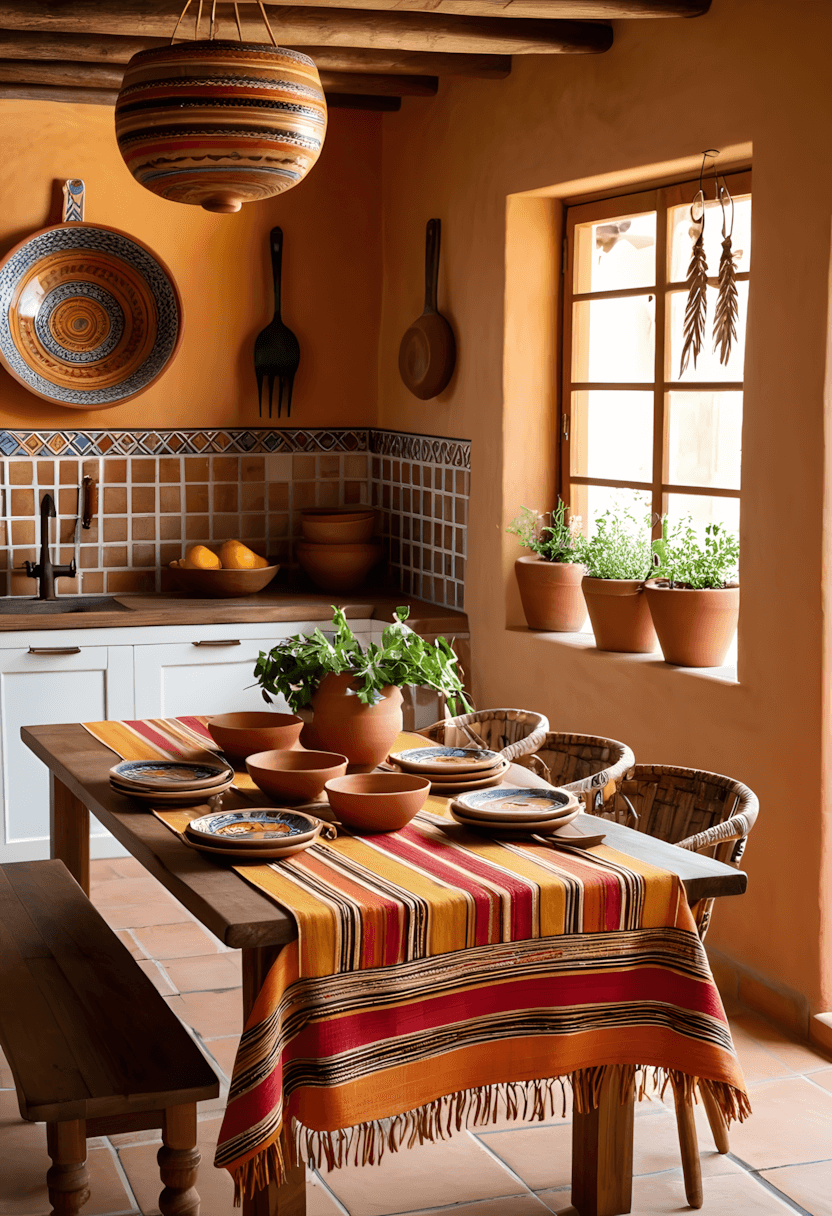
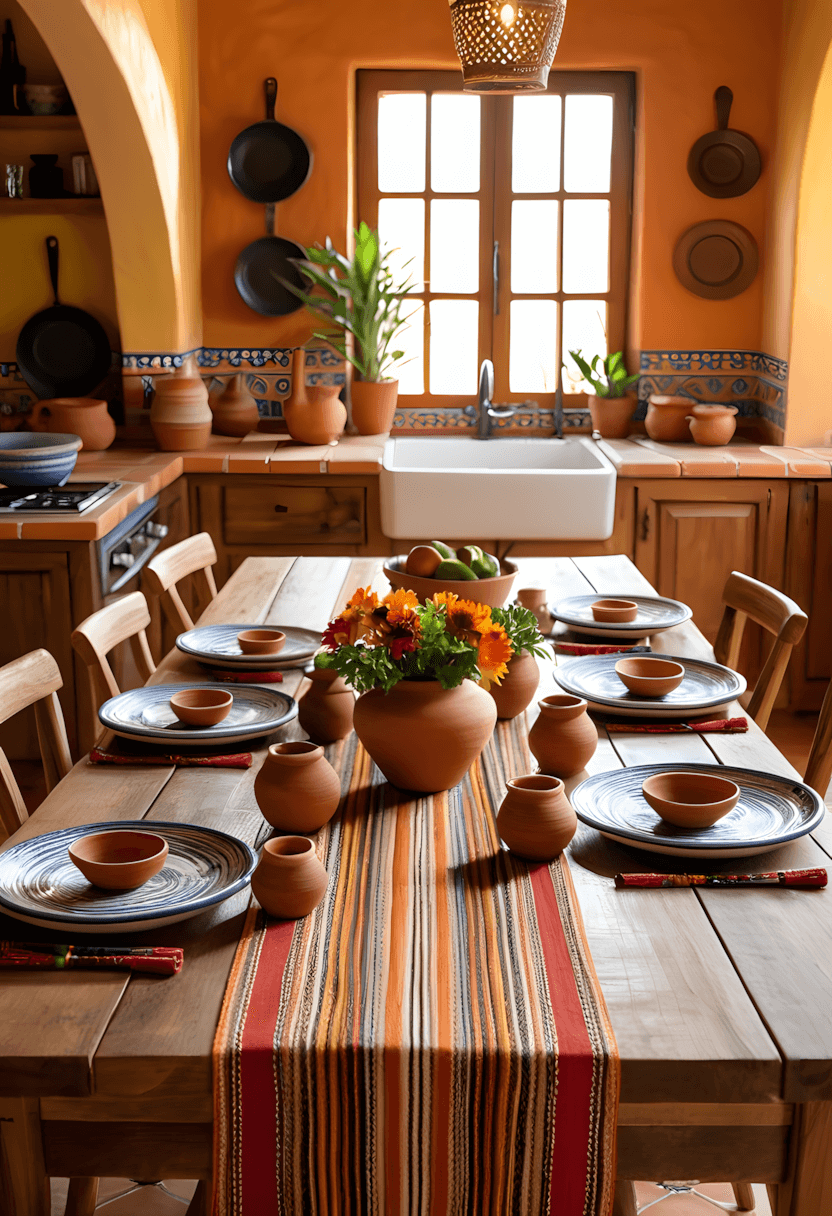
This softening approach often appeals to homeowners wanting to balance hard architectural elements with comfortable, authentic textiles. Traditional weavings typically add warmth while providing cultural authenticity.
Design application: Table runners, window treatments, or area rugs often provide opportunities to incorporate traditional patterns and colors.
Cultural consideration: Authentic handwoven pieces often provide superior quality and genuine cultural character.
16. Living Plant Integration
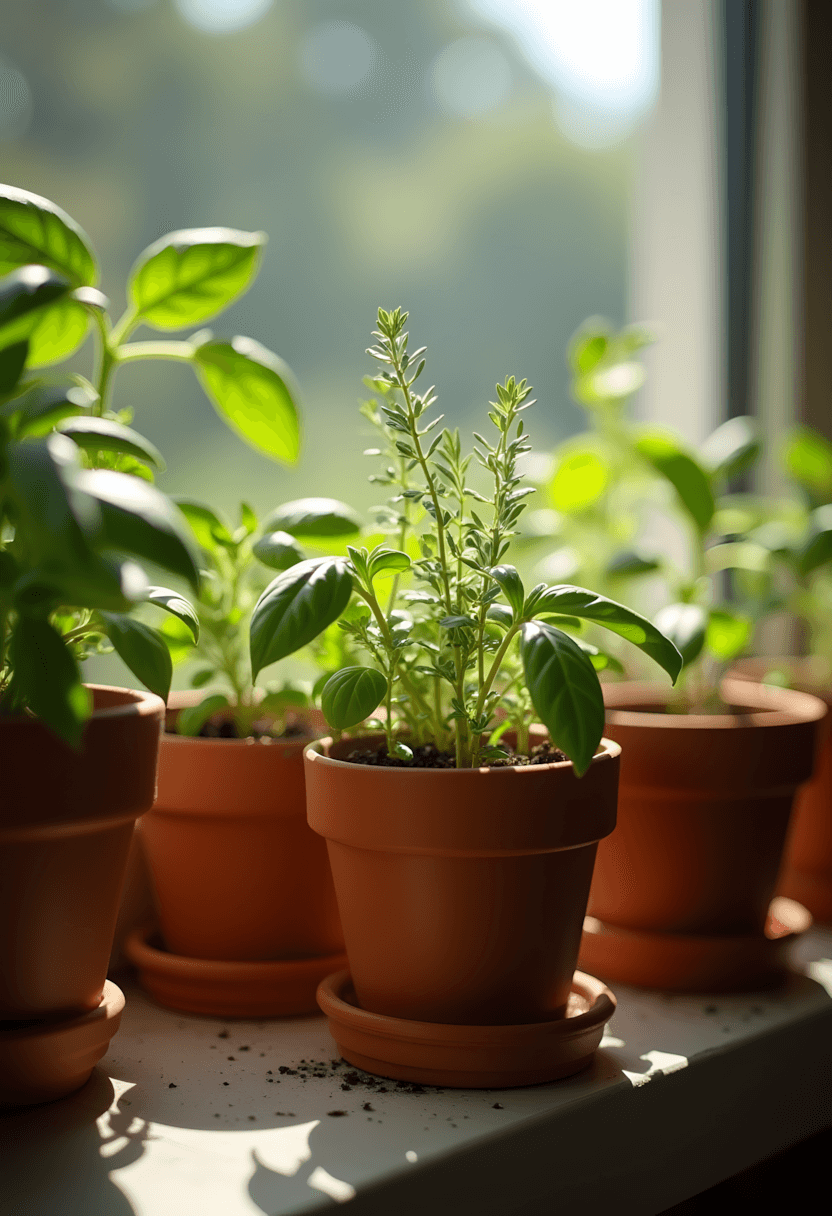
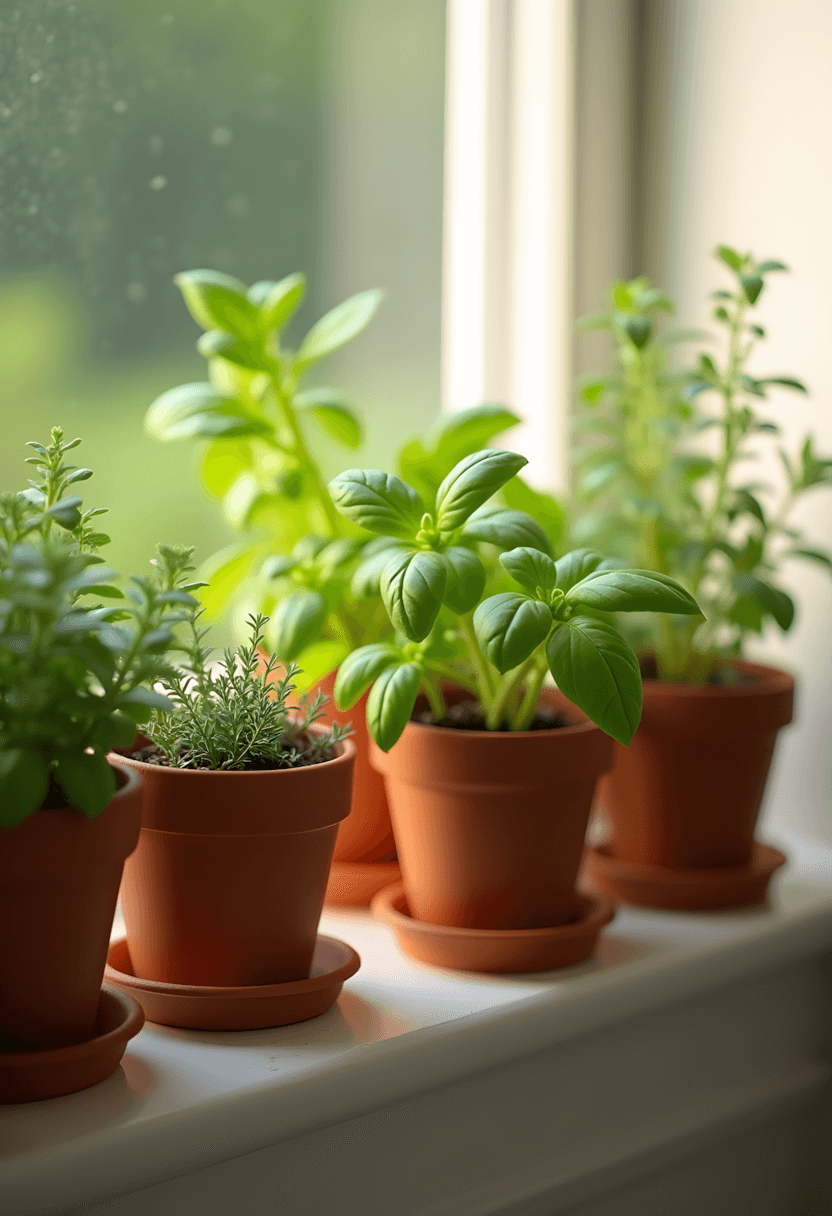
This natural approach often works well for homeowners wanting to enhance the organic, earthy character of hacienda kitchens. Herbs and plants in terracotta pots typically add life while maintaining authentic materials.
Practical benefit: Kitchen herbs often provide both decorative appeal and functional cooking ingredients.
Design harmony: Terracotta planters often complement the natural materials typical in hacienda design.
17. Carved Cabinet Door Details
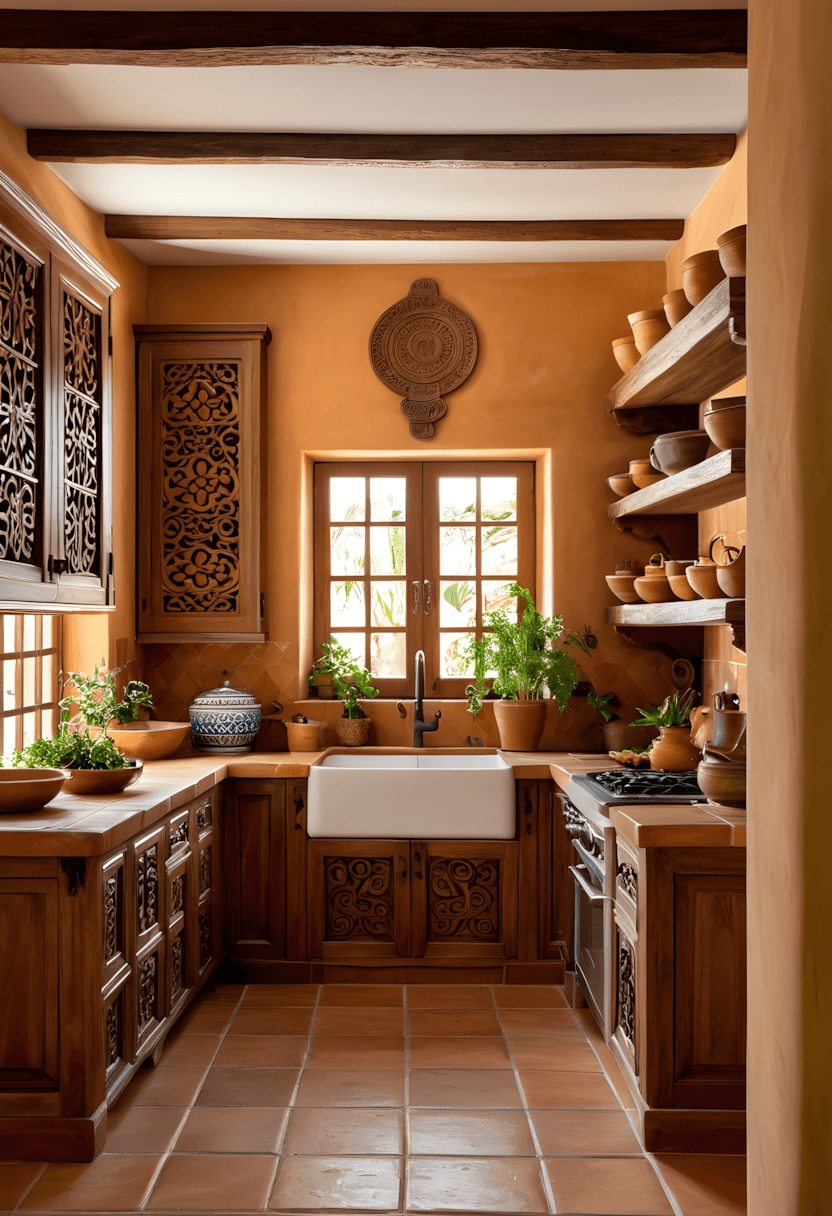
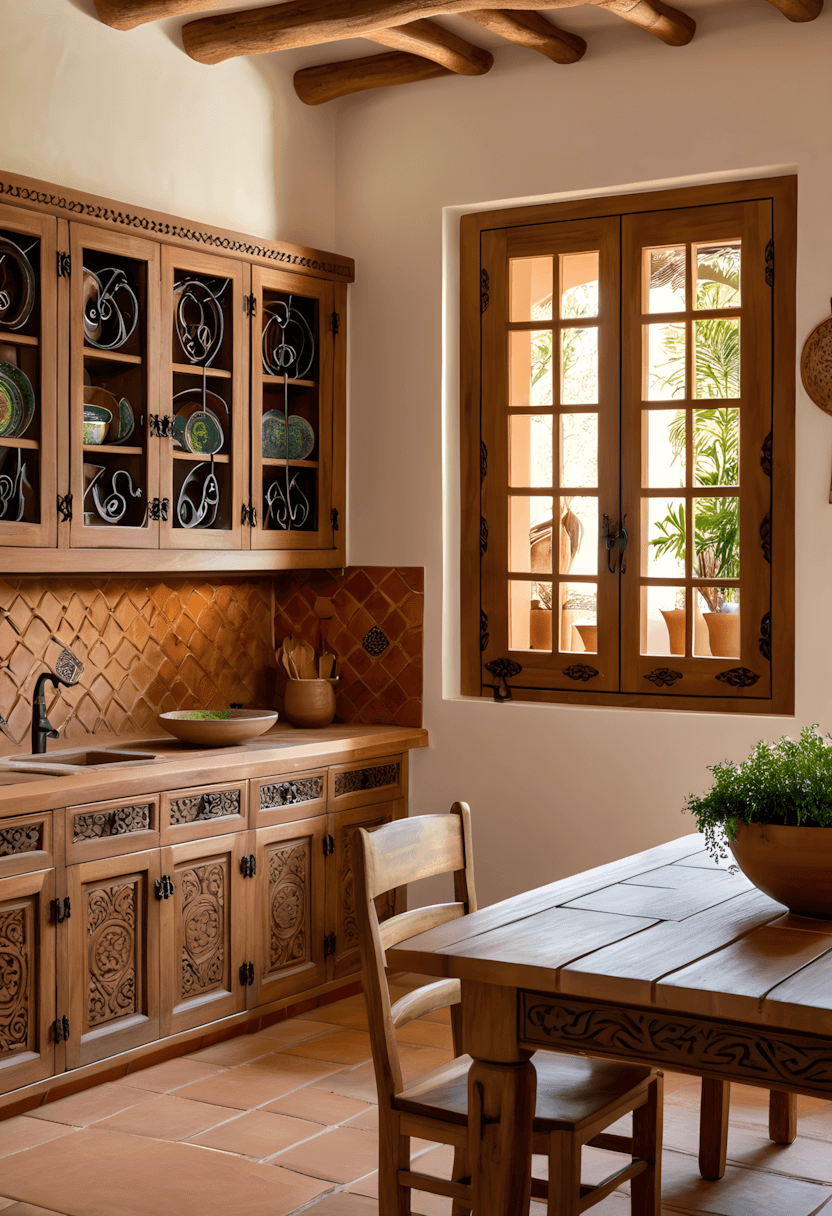
This artisanal approach often appeals to homeowners wanting unique, handcrafted cabinet features. Carved or lattice details typically add artistic elements while maintaining functional storage.
Design consideration: Traditional Spanish or Mexican-inspired patterns often provide authentic character that mass-produced alternatives cannot match.
Investment value: Quality carved details often provide lasting beauty that improves rather than detracts from the kitchen over time.
18. Aged Finish Techniques
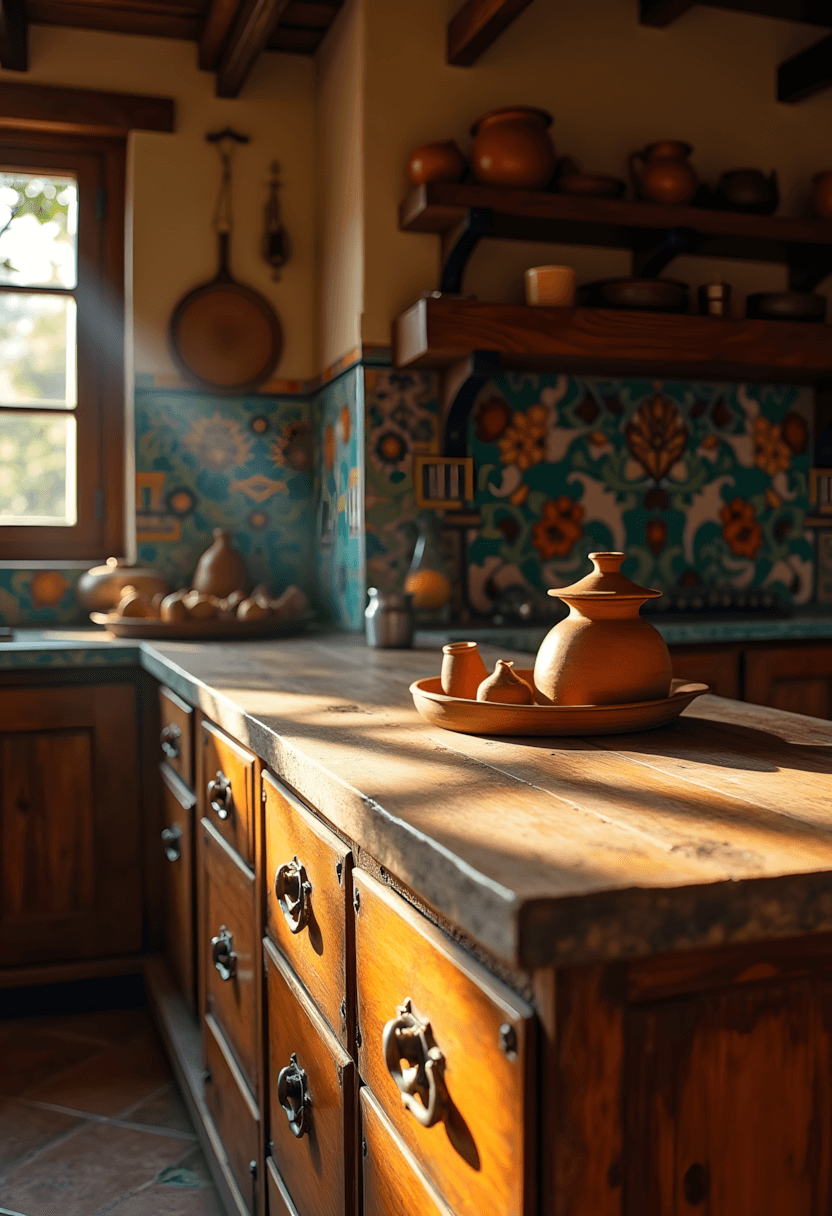
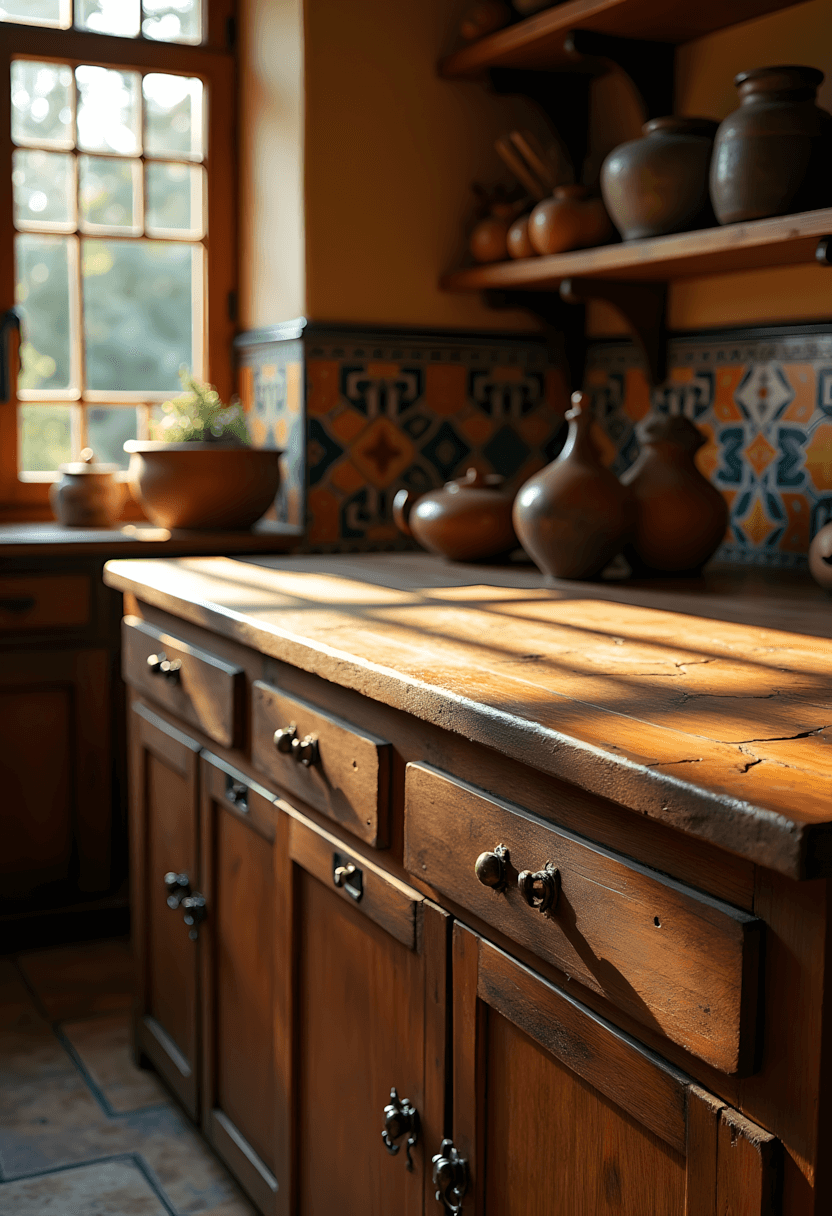
This character approach often works well for homeowners wanting kitchens that feel established rather than newly installed. Distressed or weathered finishes typically add authentic, lived-in character.
Design benefit: Aged finishes often hide everyday wear while maintaining attractive appearances that improve with time.
Application strategy: Strategic aging often works better than overwhelming distressing for maintaining sophisticated rather than artificial results.
19. Mosaic Countertop Creation
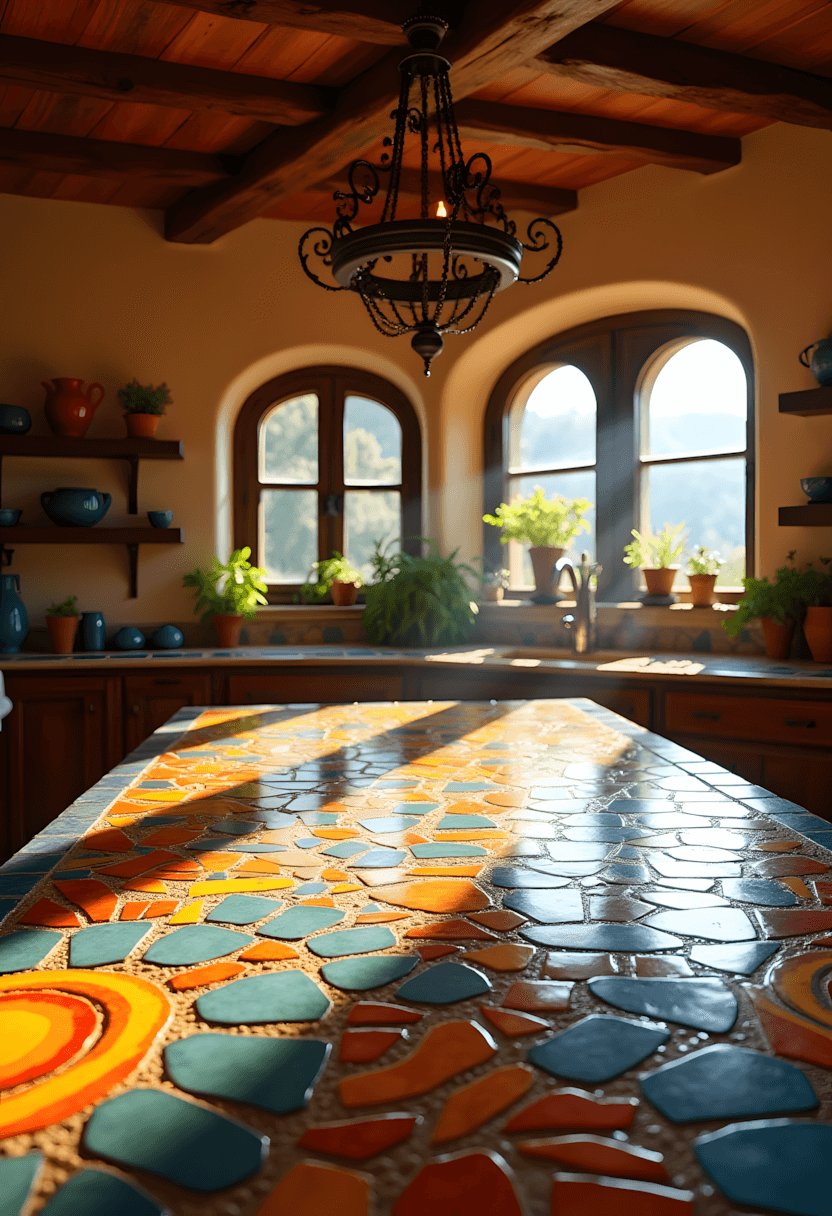
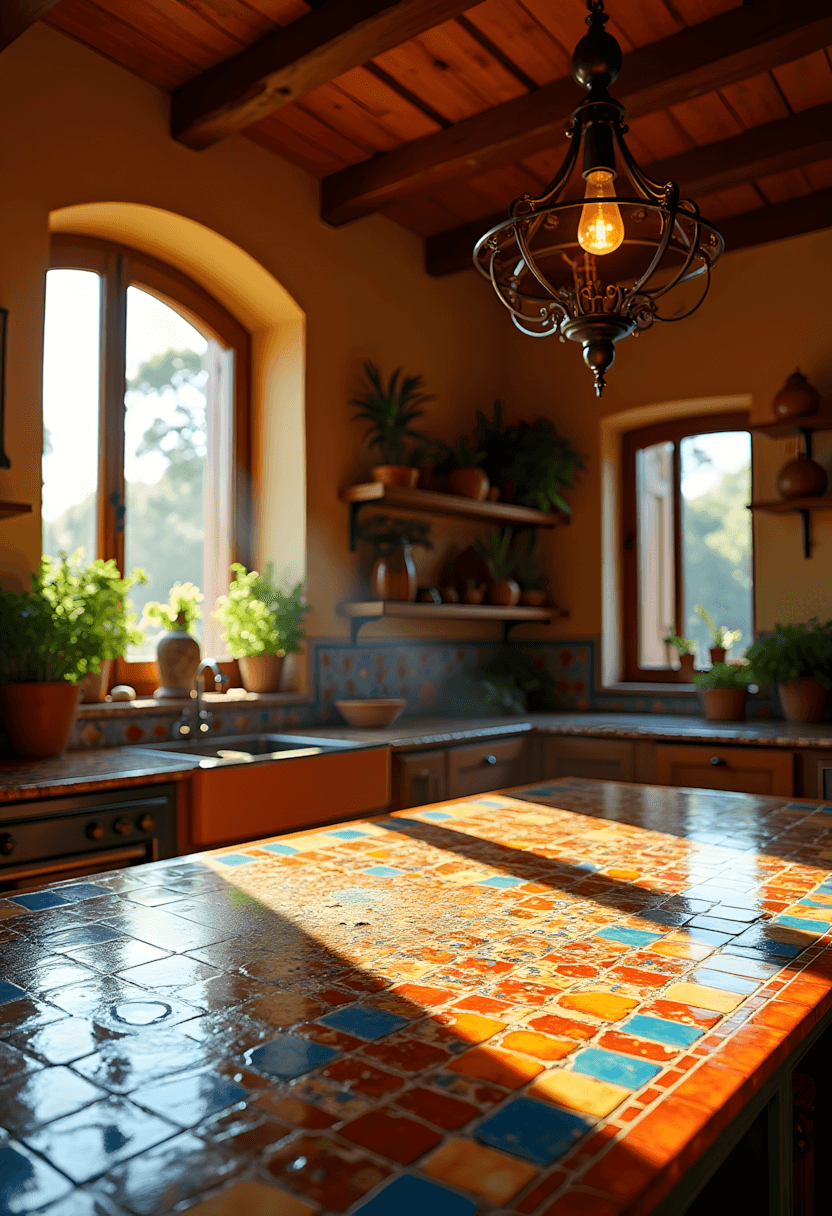
This artistic approach often appeals to homeowners wanting unique, personalized surfaces. Mosaic tile patterns typically create functional artwork while providing durable kitchen surfaces.
Design consideration: Traditional Spanish or Mexican-inspired patterns often maintain cultural authenticity while creating stunning visual impact.
Practical planning: Professional installation often ensures proper durability and maintenance for daily kitchen use.
20. Barrel Vault Ceiling Architecture
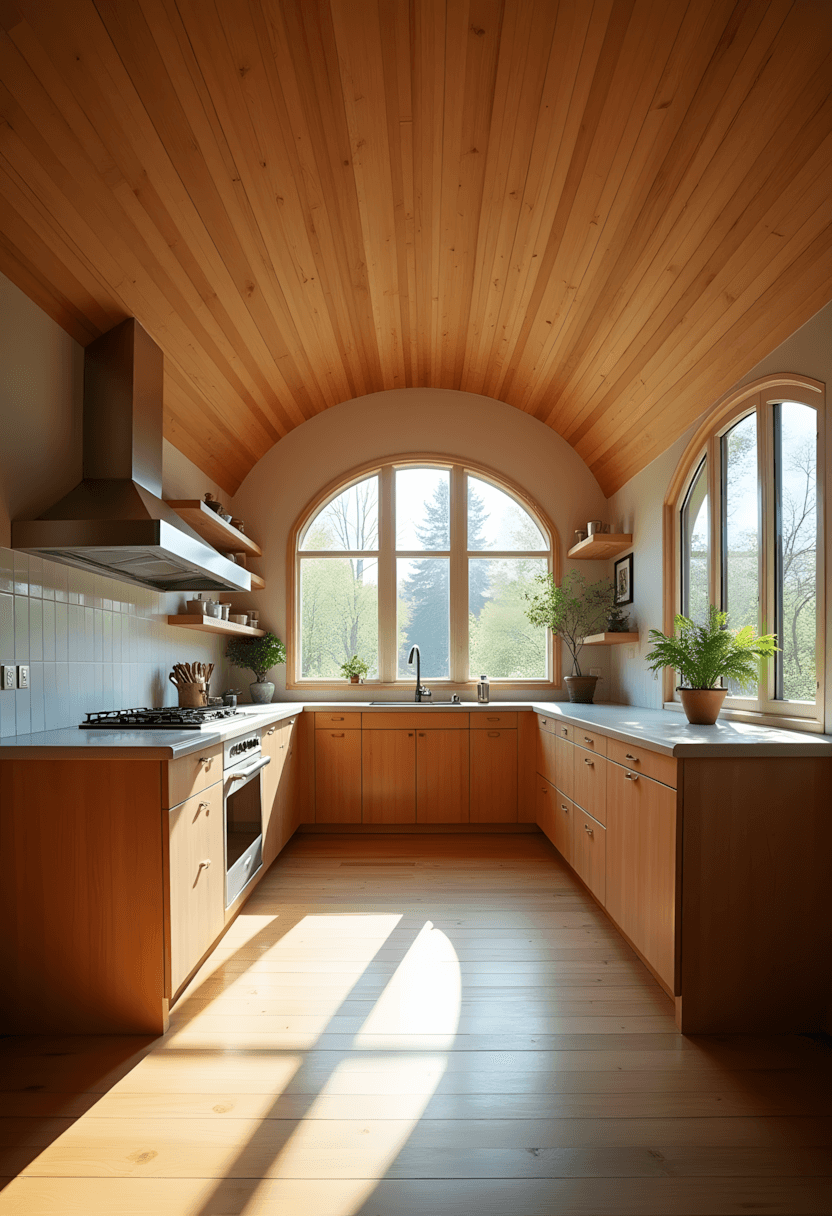
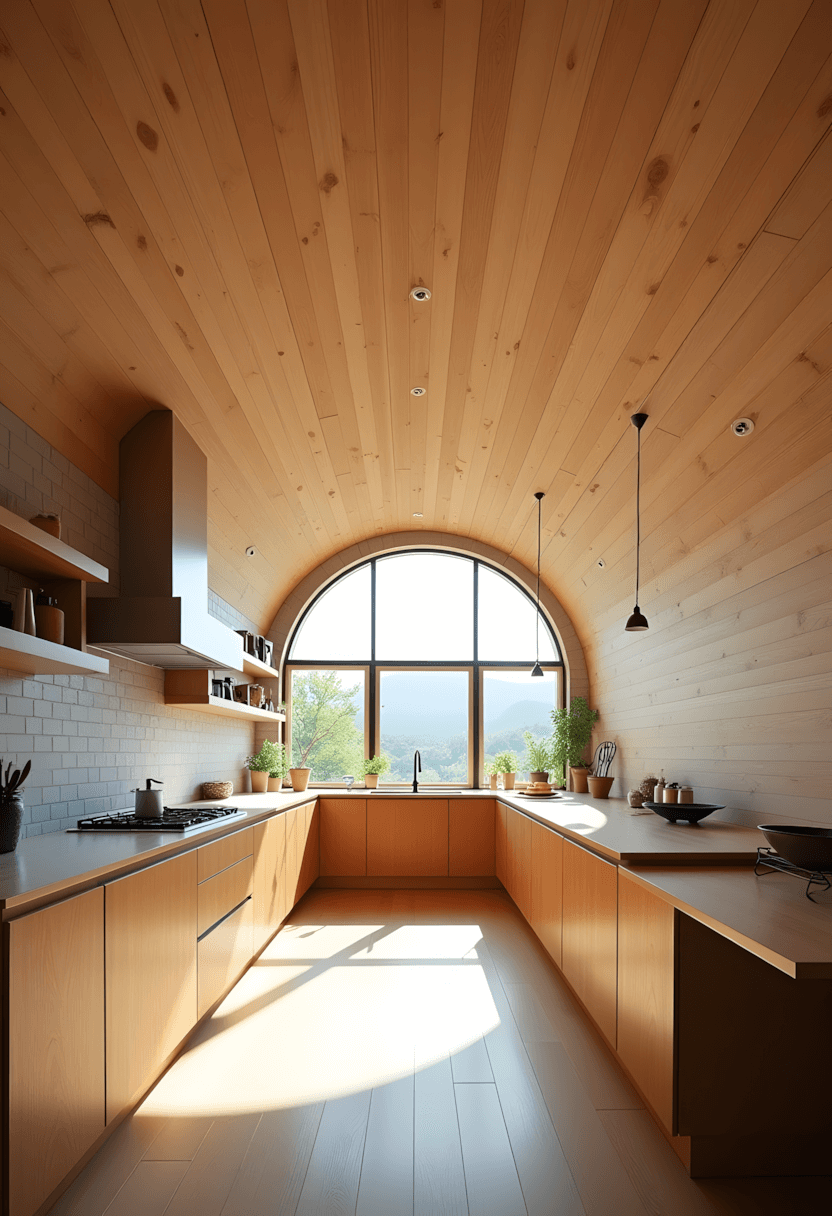
This dramatic approach often works well for homeowners with adequate ceiling height wanting impressive architectural features. Vaulted ceilings typically create spacious feelings while maintaining intimate character.
Design enhancement: Natural wood or decorative tile details often accentuate vault structures while adding textural interest.
Structural consideration: Proper engineering often becomes important for safely implementing significant ceiling modifications.
21. Hammered Metal Sink Selection
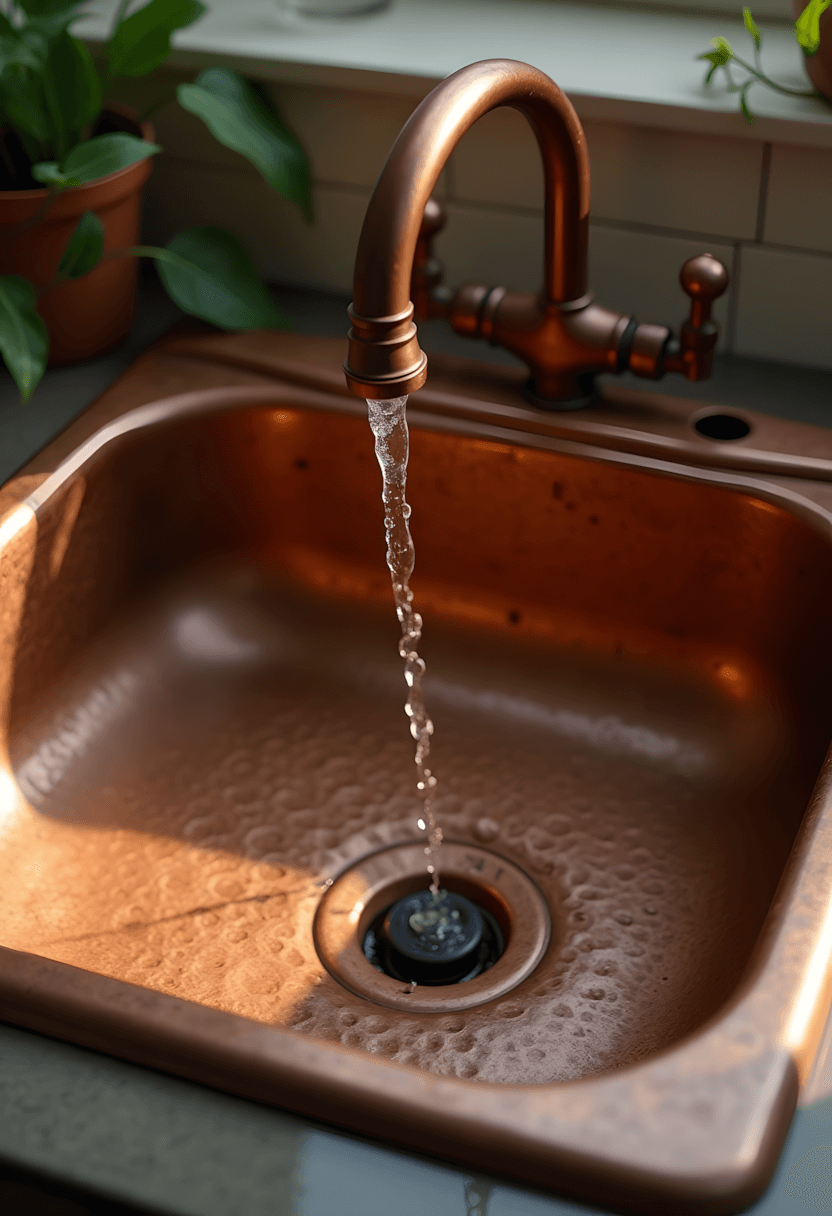
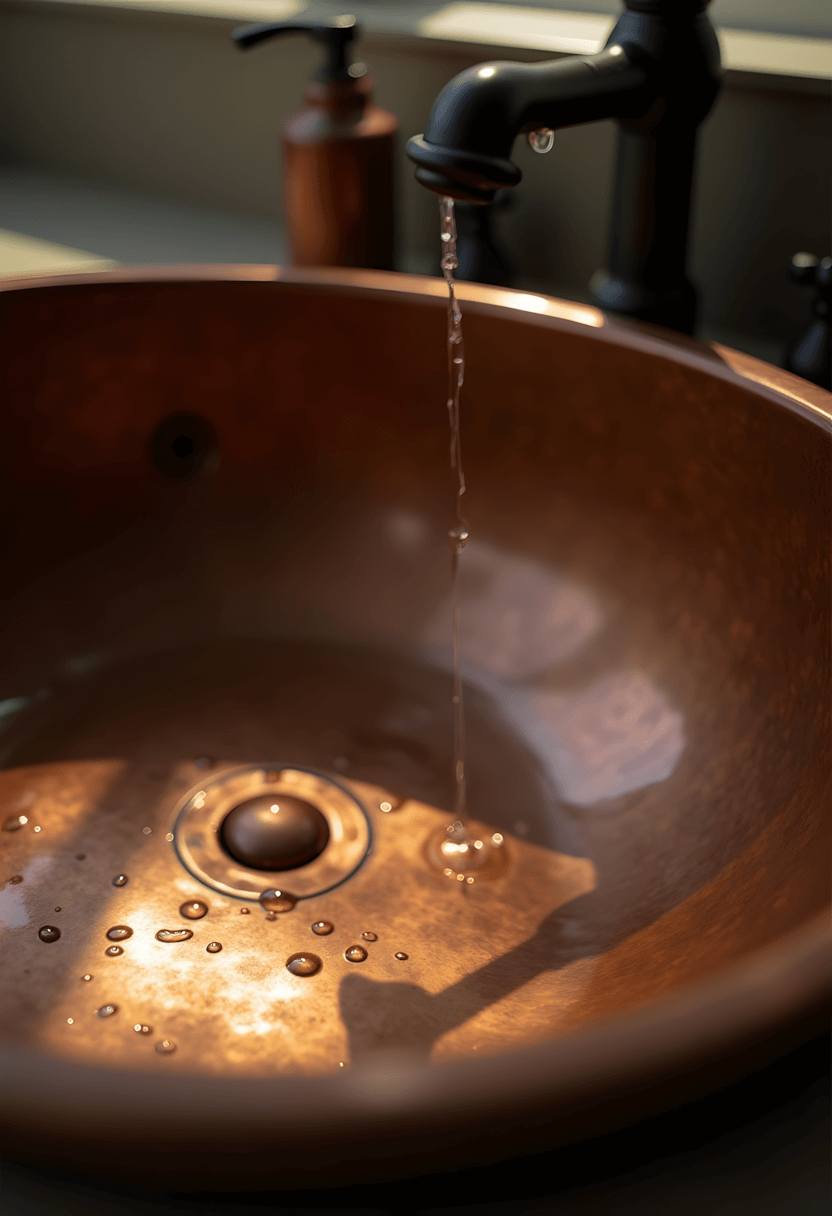
This artisanal approach often appeals to homeowners wanting unique, handcrafted focal points. Hammered copper or bronze sinks typically provide both functional benefits and authentic character.
Design benefit: Textured surfaces often hide water spots while developing attractive patina that enhances appearance over time.
Maintenance consideration: Different metals often require specific care approaches to maintain their intended appearance.
22. Candelabra-Style Lighting
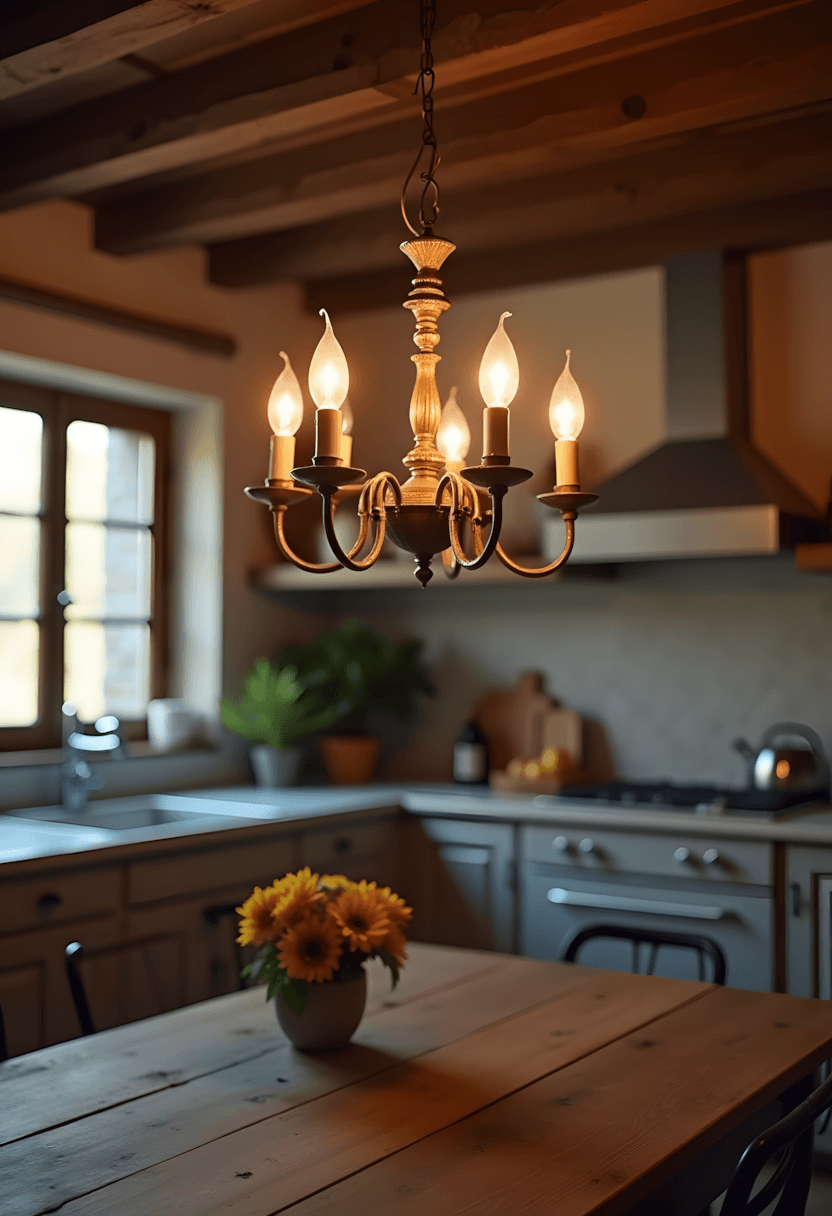
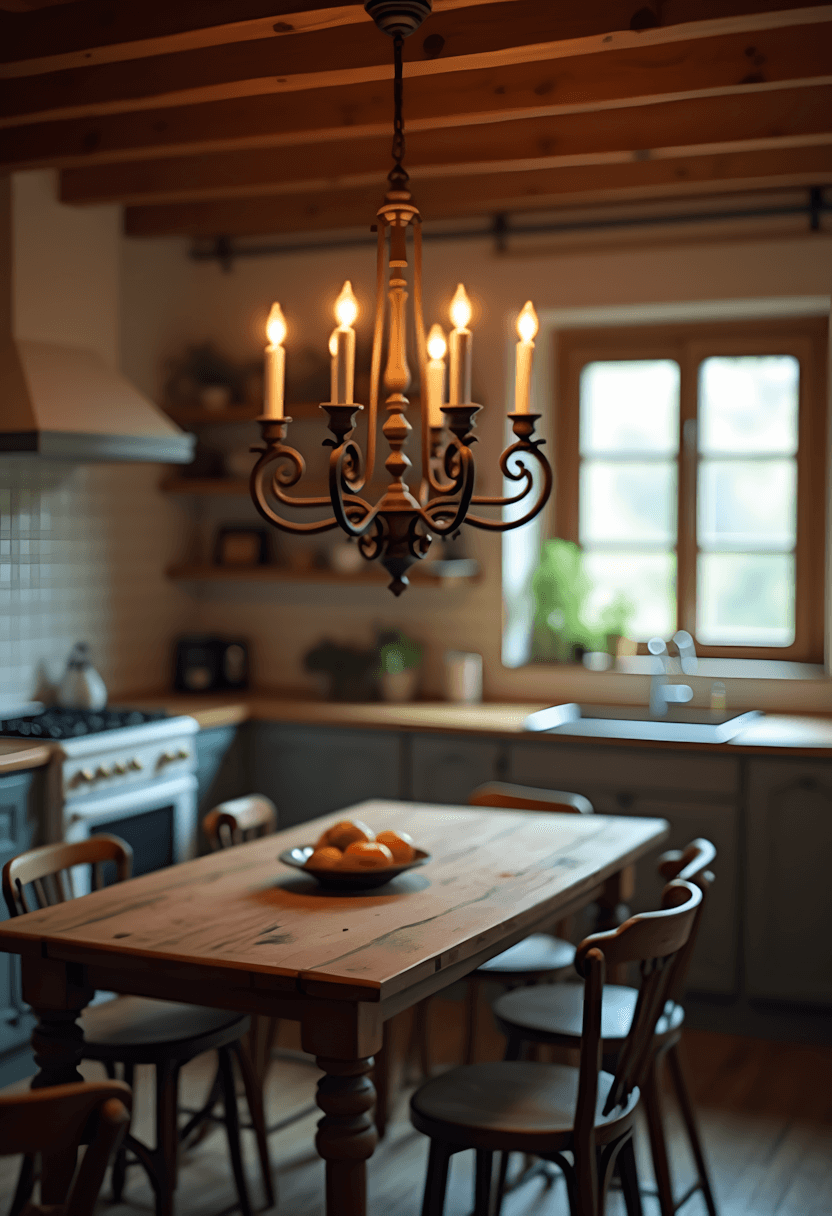
This elegant approach often works well for homeowners wanting sophisticated lighting that references traditional Spanish design. Candelabra fixtures typically provide ambient lighting while adding period authenticity.
Design variety: Simple or ornate styles often accommodate different aesthetic preferences while maintaining cultural character.
Scale consideration: Fixture size often needs to match kitchen proportions to achieve intended elegant rather than overwhelming effects.
23. Decorative Wall Stenciling
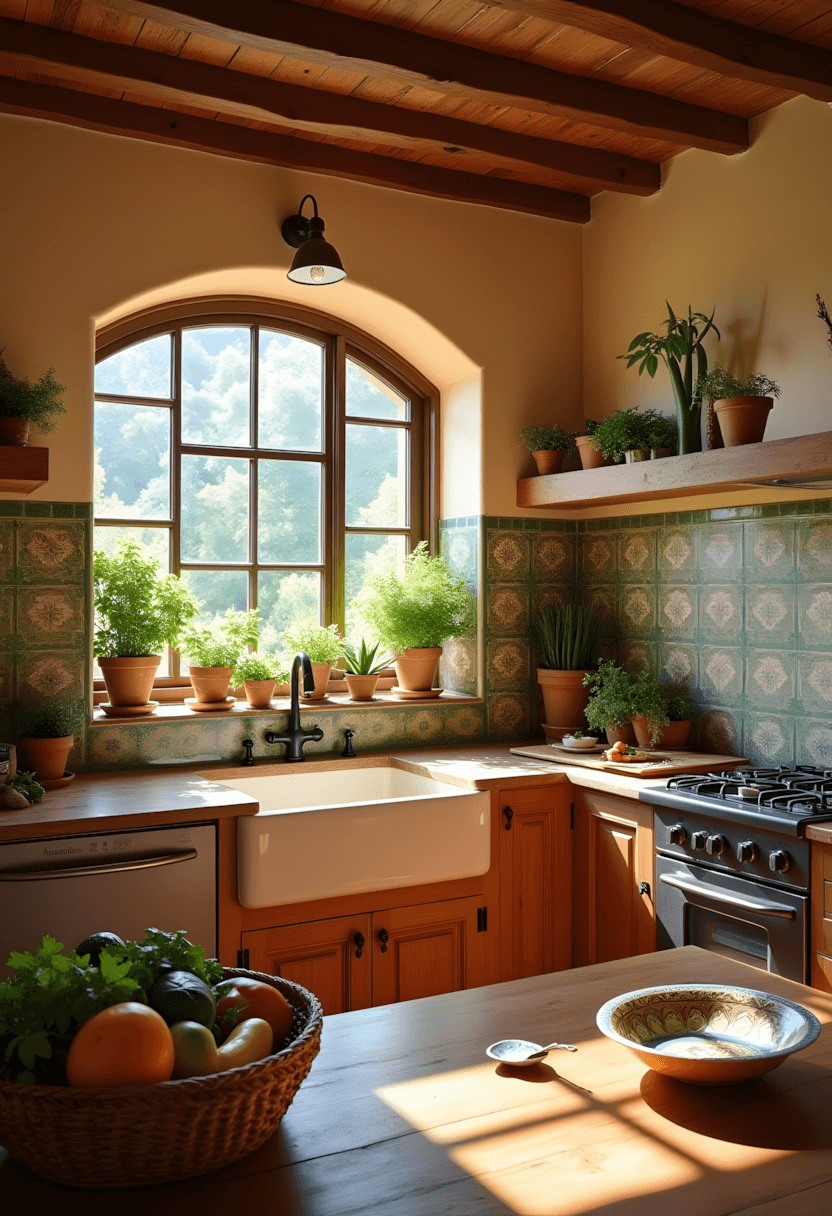
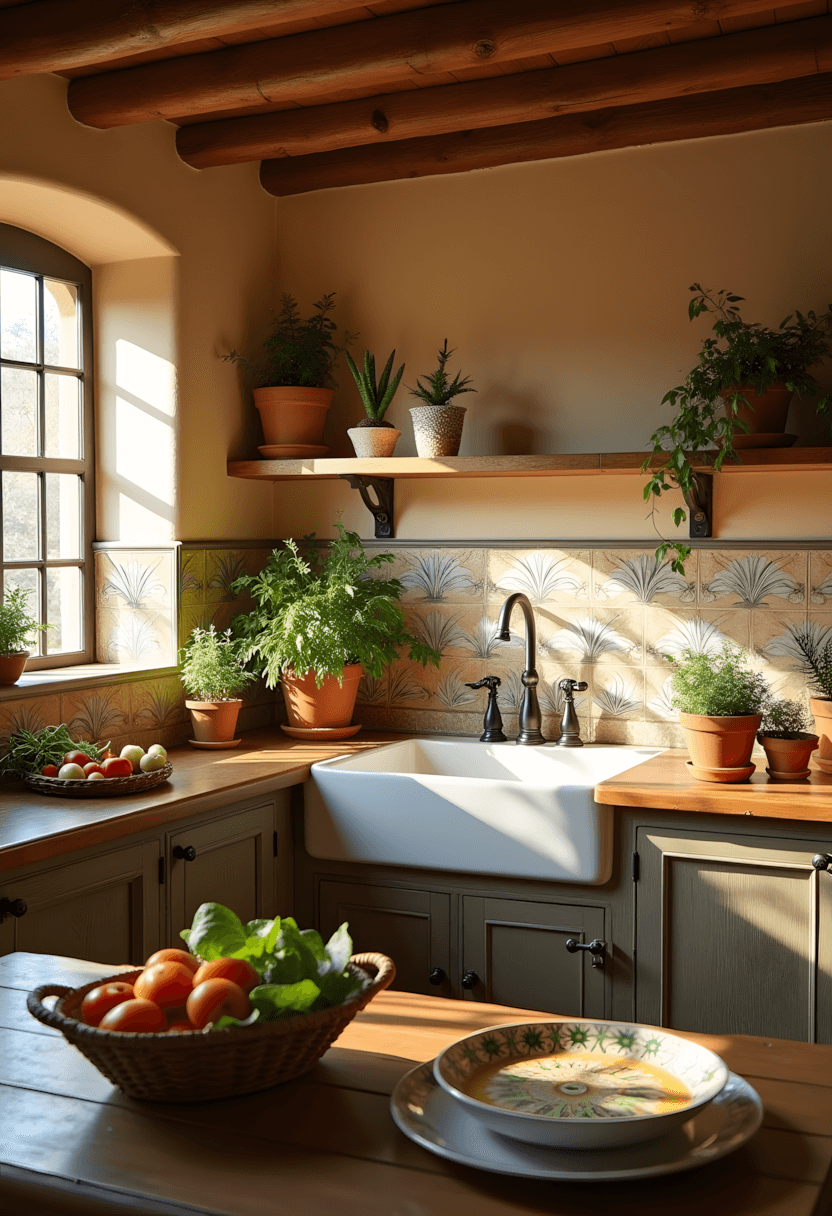
This artistic approach often appeals to homeowners wanting personalized decorative elements. Stenciled patterns typically add visual interest while maintaining cultural authenticity.
Design application: Spanish tile or Mexican folk art-inspired patterns often provide appropriate motifs for hacienda-style kitchens.
Color strategy: Complementary colors often work better than contrasting ones for maintaining sophisticated rather than busy results.
24. Exposed Brick Accent Integration
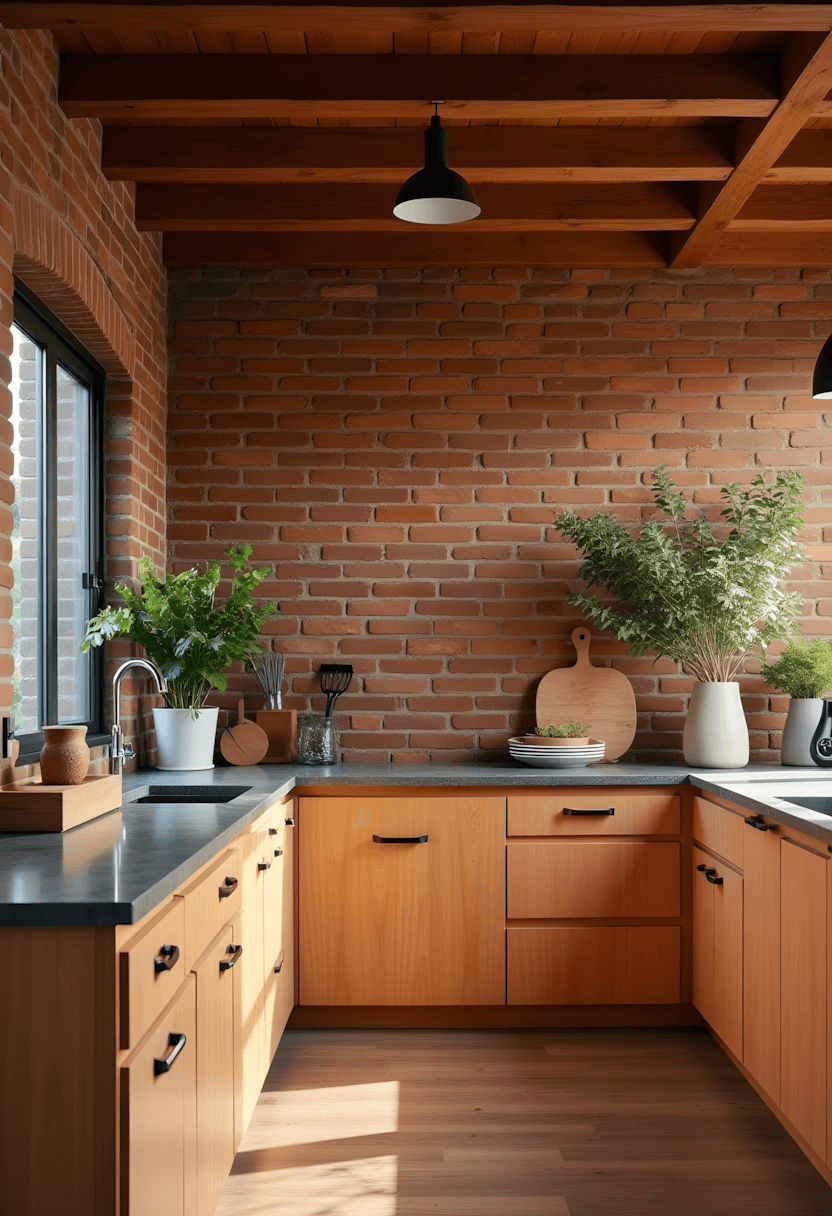
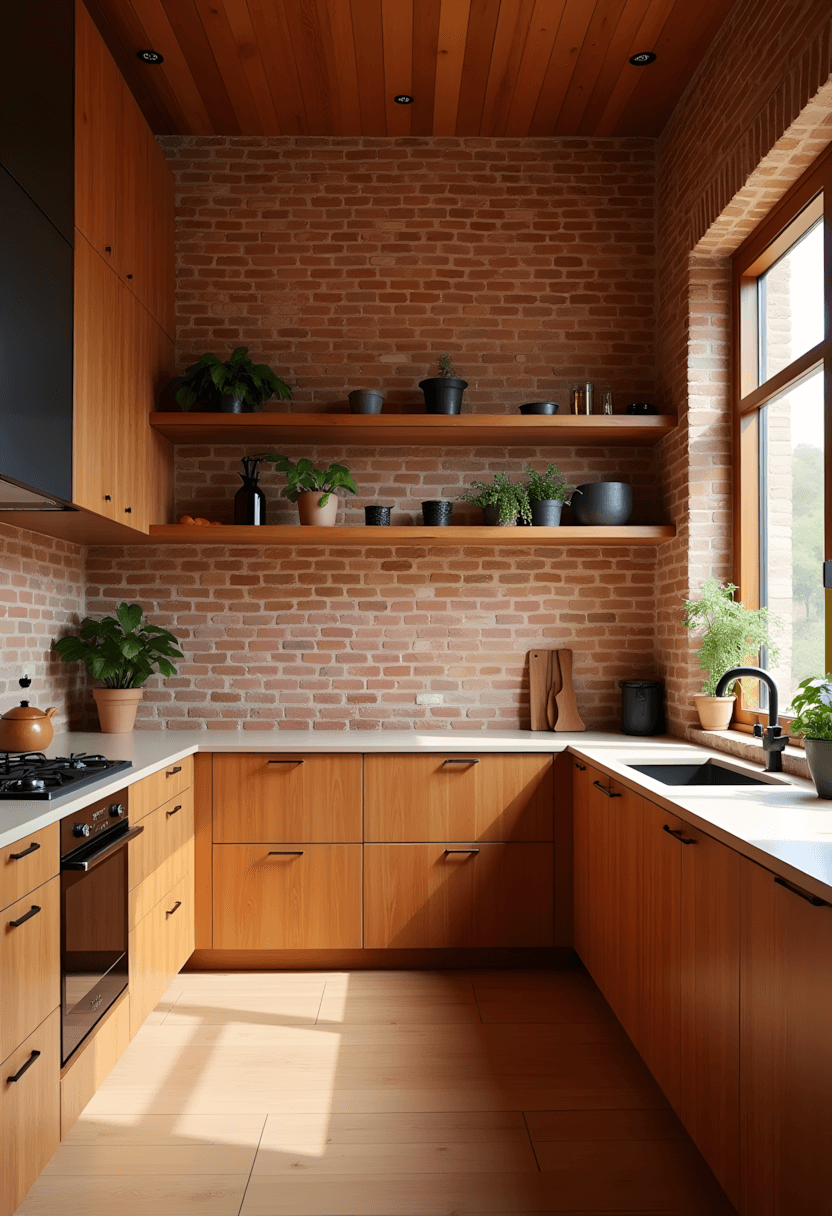
This textural approach often works well for homeowners wanting raw, authentic materials. Exposed brick typically adds warmth and character while providing durable, low-maintenance surfaces.
Design application: Feature walls, backsplashes, or island bases often showcase brick effectively without overwhelming kitchen designs.
Practical benefit: Brick’s durability often makes it excellent for high-use kitchen areas while maintaining attractive appearance.
25. Oversized Cutting Board Display
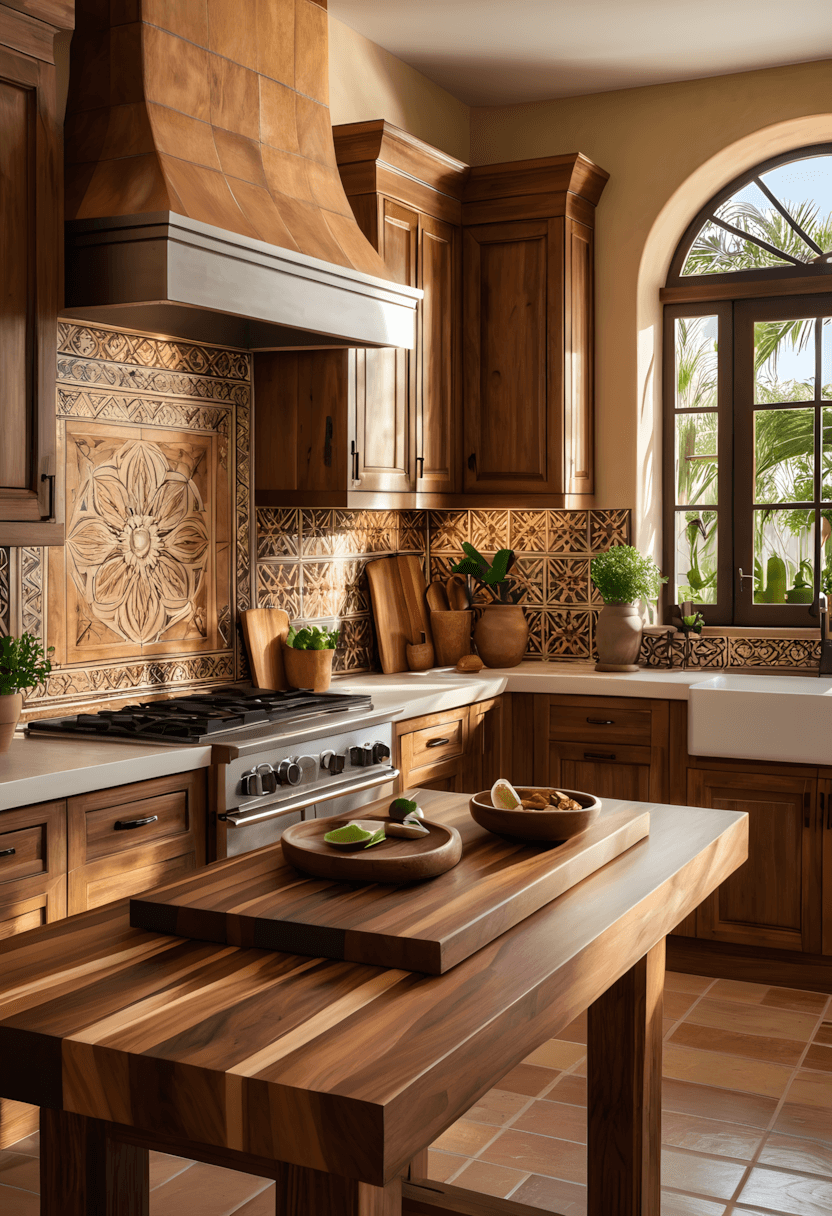
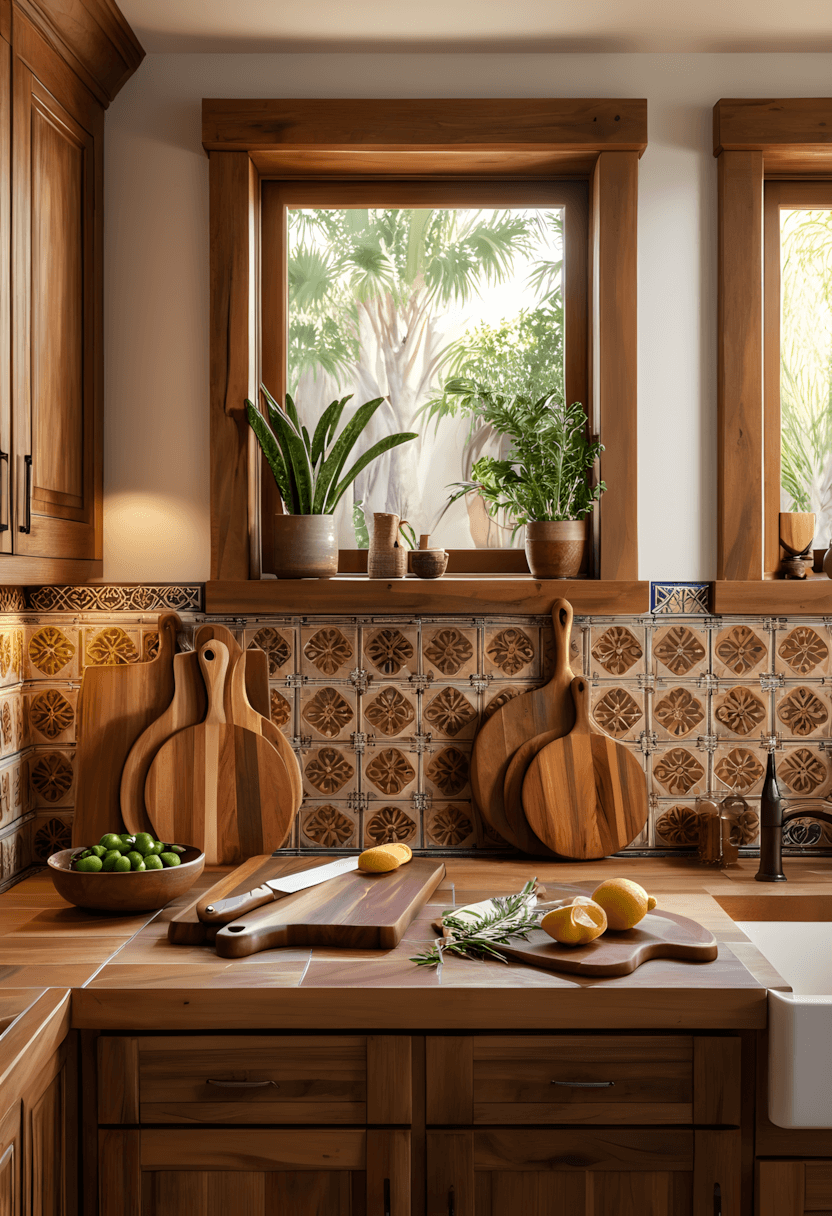
This functional approach often appeals to homeowners wanting practical items that double as decorative elements. Large wooden cutting boards typically provide both utility and authentic rustic character.
Design benefit: Leaning boards against backsplashes often creates attractive displays while keeping functional items easily accessible.
Material consideration: Quality wood often improves with use while providing lasting functionality and beauty.
Understanding Hacienda Design Principles
Through various projects, I’ve observed that successful hacienda-style kitchens often depend on understanding the cultural and practical origins of this design tradition. The emphasis on natural materials, handcrafted details, and indoor-outdoor connections typically reflects adaptations to climate and available materials in Spanish colonial regions.
Authentic hacienda design often prioritizes durability and functionality alongside beauty, creating kitchens that improve with age and use rather than requiring constant updates to remain attractive.
Material Selection and Authenticity
Choosing appropriate materials often becomes crucial for achieving convincing hacienda-style results. Natural materials like clay tiles, wrought iron, carved wood, and handwoven textiles typically provide authentic character that synthetic alternatives cannot replicate.
Investment in quality, authentic materials often provides better long-term results than numerous decorative accessories, as hacienda design traditionally emphasizes the inherent beauty of well-crafted materials rather than applied decoration.
Balancing Authenticity with Modern Function
Contemporary hacienda-style kitchens often require balancing historical accuracy with modern appliances, storage needs, and lifestyle requirements. Successful adaptations typically maintain the essential character elements while incorporating contemporary conveniences seamlessly.
Consider factors such as adequate lighting, modern appliance integration, and efficient storage when planning hacienda-inspired kitchens to ensure they work effectively for contemporary cooking and entertaining while maintaining desired cultural character.
Remember: For any electrical work, plumbing modifications, or structural changes related to kitchen renovation, always consult with licensed professionals to ensure proper installation and code compliance.

